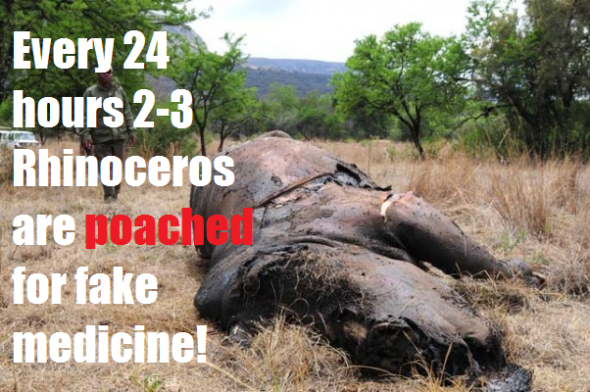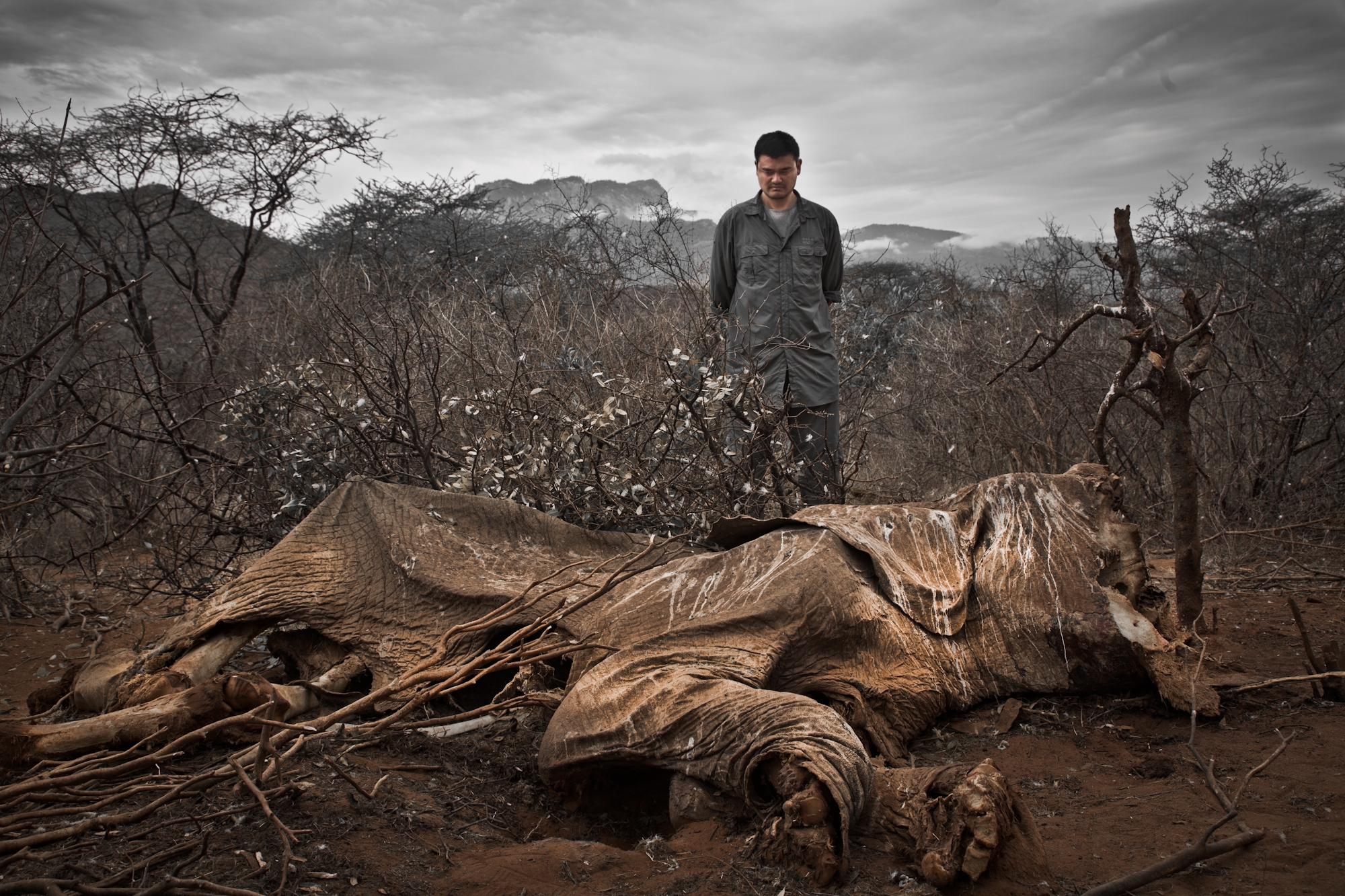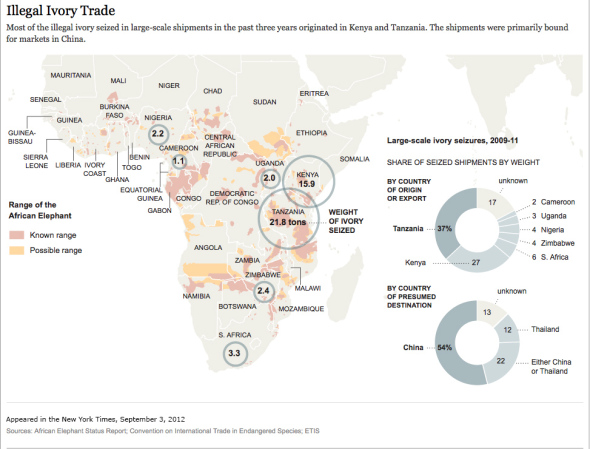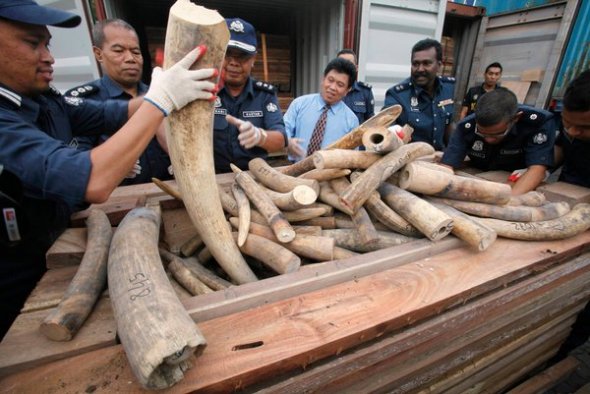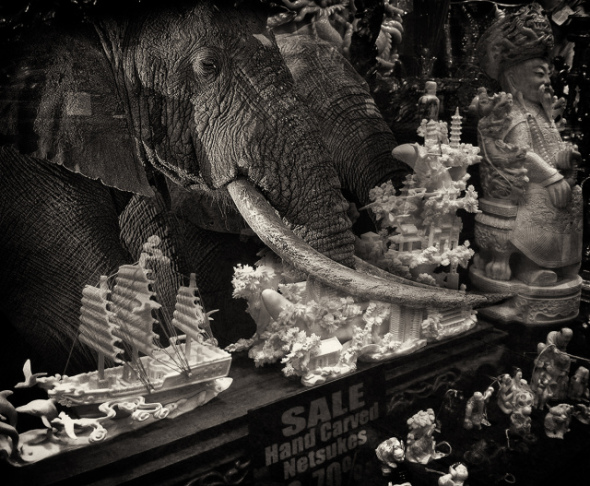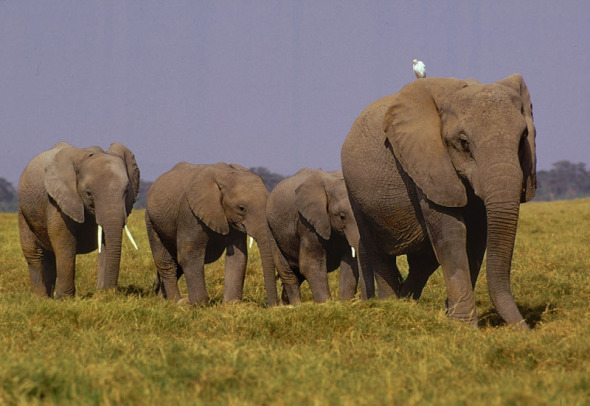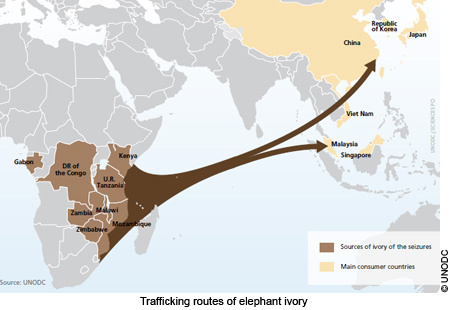Rhino War and Photography
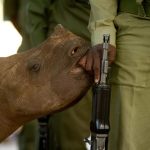

Rhino poaching within Africa has reached yet again an all time new high with a total of some 543 Rhinoceros poached dead for Traditional Chinese Medicine. Even with vast awareness campaigns, increased border patrols, upping Anti Poaching and funding the killing continues. Will it ever end? how long is a piece of string?
From the 30th June 2014 the (DEA) Department Of Environmental Affairs (South Africa) issued their Rhino poaching statistics of which was then 496. Since then a further 50+ have been bludgeoned leaving many people feeling hopeless, let down by their government, and debating on whether it is really a practical choice to support a trade in Rhino horn.
Poaching statistics for 2014 have again beaten records for the years 2010-2011. For both years, poaching statistics for 2010 were 333 poached Rhino and for the year 2011 we saw a total kill rate of 448. Poaching statistics for 2012 look as if they are most likely going to be beaten by this years June-July figures too that saw a total of 668 Rhinoceros poached in cold blood.
On a positive note arrest rates are also allegedly increasing from last year that saw a sky-rocketing 1003 Rhinoceros poached. Increased arrest rates doesn’t necessarily mean we are winning the battle, it merely shows that more and more poachers are encroaching from over the border into South Africa. 2010 saw a total of 165 poachers arrested, 2011 - 232, then in 2012 a total of 267 poachers were arrested, 2013 arrest rates shot up of which a total of 343 Rhino poachers were arrested. For June-July 2014 a total (estimate) arrest rate sees some 141 arrested. So 1148 poachers have been arrested yet we have only seen a handful of these poachers actually charged, brought to justice and convicted.
Its hard to actually believe too that Rhino horn made up of almost the same identical properties as human hair, finger nails, horse hoof, and parrot beak is selling illegally on the black market for a whopping $65,000kg whereas gold sells for a mere $43,000 kg and cocaine illegally trading at some $20,000 kg. Demand is not decreasing and while demand increases so will poaching and as explained there seems to be no end of the onslaught insight.
A powder made from the horns is prescribed in traditional Chinese medicine to cure fever and convulsions, but the substance is now used as a status symbol and a very expensive way for affluent Vietnamese to cure hangovers or, supposedly, to get high—even though the horns are composed of the common material keratin and have about the same psychoactive effects as snorting a fingernail clipping.
By weight, the horns go for anywhere from $60,000 to $100,000 per kilogram—single horns are about 3.5 kg, on average—making the substance significantly more pricey than other ubiquitous status symbols and intoxicants. Indian Rhino horns are still the most sought after and pricer too. International Animal Rescue Foundation Africa spoke with their Indian counterparts of which confirmed Indian Rhino horn is illegally trading for $80,000 kg. The reason for such high price is mainly due to the Indian Rhino’s endangered status. South Africa is home to about 75% of the world’s 29,000 rhinoceroses, but if the country can’t stop the poaching, it may lose that status, said Naomi Doak of the wildlife monitoring network, Traffic. “We are going to reach the tipping point for rhinos,” she told the BBC. “By the end of 2014, we’re starting to be in the negative in terms of deaths and poaching outstripping birth, and the population will start to decline very quickly.”
Trade in Rhino horn is outlawed by the United Nations Convention on International Trade in Endangered Species, but some argue that the best way to undercut black market horn trade is to give it competition in the form of a well-regulated, cheap and legal market for cultivated horns. Rhino horns can be removed harmlessly and regrow—so legalizing the trade could facilitate horn farming that doesn’t harm the animals. Others argue that such an option would encourage misconceptions about the medicinal properties of ingesting the horn and overwhelm the market with demand, allowing poachers to simply coexist with legal trade.
The South African government acknowledges that something has to change. The country’s minister of environmental affairs, Edna Molewa, said that government officials have been meeting to consider “a proposal for the legalization of commercial international trade” to be brought up at the next Convention on International Trade in Endangered Species meeting in 2016. Whilst many are arguing and debating on whether a legalised trade should be opened International Animal Rescue Foundation Africa and Asia are still venomously against such trade of which will kick all conservation efforts backwards. We’re basically giving into the Asian using community should trade be made legal, we’ve fought for so long and provided evidence that clearly shows Rhino horn has no medicinal active properties.
By giving in and should trade not work there us no going back and we will most certainly lose our ionic species the second largest land mammal. According to government statistics, a great majority of Rhino poaching occurs at Kruger National Park, the largest game reserve in Africa, covering 19,000 square kilometres. At the reserve, hunters and those who are impoverished slip through the park’s borders to kill and de-horn Rhinos, earning the equivalent of a typically monthly wage in a single night. Though Kruger has hired soldiers and dogs to stand watch against poachers, they cannot efficiently patrol all of the park’s land. However, when rangers or soldiers do come into contact with poachers, a shoot-out often occurs, with poachers regularly getting killed in a skirmish with security staff. And were not just talking about any reserve here that to some may sound quite easy and straightforward to patrol. Kruger National Park is the size of Israel covering a massive 19,485 kilometres square.
In Nov. 2011, two rangers spotted poachers who were tracking a white Rhino at Ndumo Game Reserve. When the rangers ordered the men to lower their weapons, the poachers, instead, pointed their guns at the rangers and shot. The shoot-out eventually led to the apprehension of one poacher and the death of another, Erasmo Mazivele. Astonishingly, the magistrate, who ruled over the court case in June 2013, convicted the apprehended poacher, Wawito Mawala, with murdering his accomplice, even though it was the rangers who killed Mazivele. The magistrate stated that Mawala had been the cause of Mazivele’s death because Mawala had knowingly put the Mazivele’s life in danger.
The placement of security at game reserves and the persistence of rangers have been positively helping the fight against Rhino poaching. According to the Game Rangers Association of Africa, within the first four months of 2014, 96 low-level Rhino poachers have been arrested. However, not all law enforcement assigned to protect these Rhinos can always be trusted. There have been numerous cases where rangers assigned to guard reserves have been found aiding poachers. This has always been a major concern to International Animal Rescue Foundation Africa of which is strictly monitoring where they place funding too and where equipment is sent, the risks are high, corruption is rife and where a months wages can be made in a day the urge to cross that line and illegally slaughter or aide poachers is tempting to rangers that are barely paid a weeks salary for a months work.
Though the majority of Rhino poaching occurs at Kruger, smaller reserves have also been affected. Poachers have hunted in a variety of game reserves, leaving behind mutilated carcasses of Rhinos, with their horns hacked out of their heads, their eyes gouged out, and their genitalia and ears cut off. To make matters worse, new hunting methods and high-calibre weapons have been developed to make the poaching of these 900 kg animals easier. Helicopters, high-powered rifles, tranquillizer guns, veterinary drugs and night vision goggles have all been used. Since Edna Molewa ordered a “restriction” of Entorphine (M99) back in 2012 there has been quite a large reduction of Rhinos being poached using tranquillizer guns and M99.
Unfortunately the poachers are fighting back. The eyes and and ears of the African skies the Vulture has been targeted viciously by both Rhino and Elephant poachers using cyanide or diclofenac a NSAID anti-inflammatory that is normally used within human and veterinary medicine to reduce skeletal inflammation. Vultures would normally be the first alerting sign to law enforcement on the ground of a dead carcass or seriously injured Rhino that is haemorrhaging profusely.
Have we lost the battle though>? it seems not, nor are we going too. This month has seen more people such as high ranking celebrities and wildlife photographers taking up awareness campaigns or helping to reduce Rhino poaching through whatever means they can. Rhino horn smuggling and selling is transnational and worth millions of dollars, causing the rise in Rhino poaching to only increase throughout the years.
However, in response, in 2012, South African and Vietnamese governments signed a treaty increasing enforcement of hunting bans to deal with Rhino poaching and other conservation issues. The two governments have since been sharing information to clampdown on offenders. Their goal is to disrupt Rhino smuggling transit routes from Africa to Asia.
Celebrities have also played a huge part in Rhino horn awareness, Prince William, David Beckham and Yao Ming teamed up with WildAid to create a series of public service announcements (PSAs), aimed at China and Vietnam, urging people to not support the trading of illegal wildlife. In the first video, the trio focused solely on the ever decreasing population of rhinos due to poaching.
WHEN THE BUYING STOPS THE KILLING CAN TOO!
PLEASE TELL YOUR FAMILY AND FRIENDS NOT TO BUY RHINO HORN, IVORY OR SHARK FIN!
David Beckham and the Duke of Cambridge Prince William team up to protect our mega fauna;
Back in June Prince William and soccer legend David Beckham teamed up to launch a campaign that aims to protect animals from illegal poaching. The Duke of Cambridge, who is also the president of United For Wildlife, promoted the new hashtag #WhoseSideAreYouOn while flanked by Beckham and other star athletes at Google Town Hall in Central London.
“The illegal wildlife trade is responsible for the slaughter of tens of thousands of animals a year, pushing some of our most beloved species to the brink of extinction,” William said. “Our children should not live in a world without elephants, tigers, lions and rhinos. Enough is enough. It is time to choose between critically endangered species and the criminals who kill them for money.”
The #WhoseSideAreYouOn campaign aims to reach people via Twitter, Facebook, Google Plus and You Tube. Supporters will also be urged to participate in or watch United For Wildlife sports events. In anticipation of the launch, William posed alongside his brother Prince Harry for a photo posted to United For Wildlife’s Twitter account. The brothers held a sign that bore the campaign start date of June 9, as well as their royal signatures that can be seen below along with Tennis Champion Andy Murray.
While there are many celebrities now taking up the fight to protect our critically endangered wildlife species there are also the likes of Hilary O’Leary a Zimbabwean wildlife photographer that has been creating awareness of the Rhino poaching epidemic. Miss O’Leary entered a stunning picture of a baby Rhino calf into the Wildlife Photographer of the Year award back in June 2014. Entered into the Natural History Museum (WPY) Award Hilary O’Leary explains in her own words to Dr Josa Depre what inspired her to enter this particular photograph into the award - The interview can be seen below;
Picture Hilary O’Leary
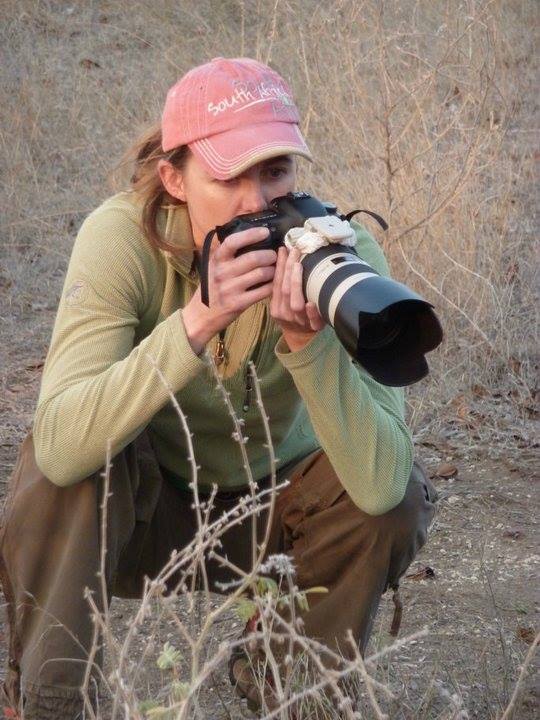
An interview with Hilary O’Leary - Hilary O’Leary has entered one of her stills into the Natural History Museum - Wildlife Photography of the Year Award that has since we published seen an unprecedented amount of support from the public voting in their droves. Please scroll down to view the image, click on the picture and please vote.
Josa - When did you become interested in photography?
Hilary O’Leary - I am fortunate to live in a place which has the most magical things to see and about 3 years ago I realized there was so much more to see when you change the way you view things.. I would say my first interested in photography was about 5 months after I started taking wildlife pictures.. when all of a sudden I felt that wonderful feeling of capturing a great
image. Only then could I see the difference between taking pictures and
photography.
Josa - What’s been your most worked on project and what obstacles did you have to overcome in concluding that particular project?
Hilary O’Leary - My photography is purely a hobby and the only project I could assign to have had has been two or three Photography competitions. So no obstacles yet.
Josa - Whom inspired you to become such a professionally outstanding photographer? I state outstanding as I have viewed some of your past work and you have a great eye for detail.
Hilary O’Leary - I would say I know what I like and have admired and recognized styles throughout all Wildlife Photographers work I have witnessed. I would say the feeling you get when you look at some pictures is what inspires me most.
Josa - I can see you have quite a fondness for African Rhino, do you intend on using your work to fund Rhino projects such as anti-poaching or funding orphanages?
Hilary O’Leary - Yes I love Rhino, only when you have a chance to spend time with them to you realize how innocent and gentle they are. I want to help in anyway I can.
Josa - Rhino poaching has for this year drastically overtaken previous records from 2010, 2011 and 2012 with a near 600 Rhinos slaughtered for fake medicine. How does this make you feel knowing that we could soon see the second largest land mammal banished from the face of the earth and do you have any projects to help sustain Rhino preservation?
Hilary O’Leary - The feeling is - desperate. I can’t help but think the next generation will spend all its resources repairing the damage… But I believe we can make a difference and we will win.
Josa - Can you please explain to our readers what inspired you to take this particular photograph and what sentimental value it has to you?
Hilary O’Leary - The picture was quite incidental as I was driving past and saw a scene.. I only saw what I had captured when I downloaded the images… and the message was so strong. I felt it fitted ” a picture says a thousand words” connotation perfectly.
Josa - Environmental News and Media, Speak up for the Voiceless and International Animal Rescue Foundation Africa have been hosting a youth photography group on-line for the past two years. Do you have any advice, skills or information you’d like to provide to our younger readers that are currently actively involved within youth photography and wildlife preservation?
Hilary O’Leary - I can only say the world is in our hands and there are enough of us to make a difference. I love a quote a read in a different context about training but would like to re-use it here in the war against anti-poaching - its like fighting with a lion… you don’t stop when your tired you stop when the lions tired. We all respond to an image and a single flash of one can stay in our minds
forever… capturing the right images keep the moment real forever and that can change lives!
Josa - What camera and exposure did you use to take this photo pictured above and how long did you have to wait to obtain that pure brilliant shot?
Hilary O’Leary - I use Canon, and it was early morning so light was a little low… 1/200, f2.8
Josa - You have entered this particular piece into the wildlife photography of the year award and since we have published this onto our pages and now ENM site it has generated hundreds of votes and many thousands of shares and likes. Will you be planning on furthering your career outside of your home country Zimbabwe and if so what areas do you plan on working on?
Hilary O’Leary - I have not thought about it… will see what opportunities arrive.
Josa - What’s been your proudest moment in life during this career of photography and why?
Hilary O’Leary - Well it would have to be the current situation, a picture that has created such a wonderful, strong response and a message that has been received correctly.
Josa - On viewing your work past and present I can see that a great deal of patience has gone into perfecting that best shot that has won the hearts and minds of many. Can you describe to our readers just how long it takes you to obtain such outstanding stills, the work that goes into obtaining that perfect still, and how many days and nights have you worked on just one single project?
Hilary O’Leary - I think the time has been spent in recognizing, out of the thousands of images I have taken, which one had the special message. Hours of editing, deleting and searching for a great image..
Josa - What’s been your worst downfall within your career of photography?
Hilary O’Leary - Can’t think right now… I hope its not yet to come either!
Josa - Where do you see oneself in ten years time and do you plan on keeping this amazing work up?
Hilary O’Leary - I hope I will have managed to make, support or assist in the changes we are desperate to see. I hope the success can be measured over years and decades to come. . I hope in 10 years we still have the animals that are so critically endangered.
End of interview.
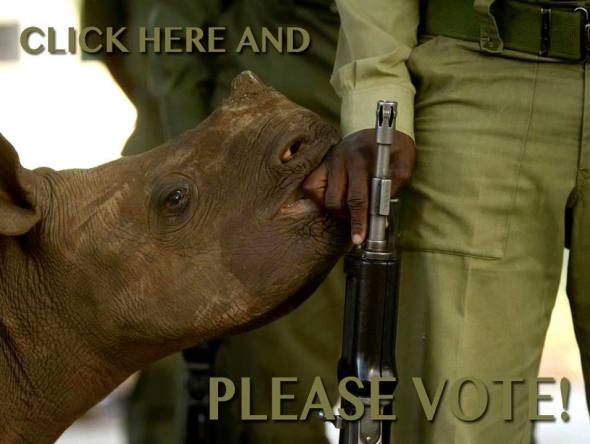
Hilary O’Leary met this little black Rhino whilst spending time at the Malilangwe Conservation Trust in Zimbabwe. The Rhino’s story, however, is not as sad as it might seem. His mother is alive and they are protected by the trust. This image is part of our first ever People’s Choice Award. Since publishing the Hilary O’Leary’s still via our Facebook, Environmental News and Media sites there has been a whopping amount of public support.
People in their thousands have liked and hundreds more have set about voting too. Please don’t forget to vote by clicking on the photo above or by clicking the link here please remember that the closing date for voting is 5th September 2014. Please share this article and ask your friends and family to vote too. The more awareness created of our endangered species the more support can be generated hopefully securing their future furthermore.
Meanwhile in Zimbabwe it has been alleged that Rhino poaching has decreased and Zimbabwe’s Black Rhinoceros population has increased too. The Ministry of Environment, Water and Climate has revealed that there has been a significant drop in Rhino poaching between 2010 and 2013. The African rhino has continued to attract the world’s attention with fears the species might become extinct due to poaching.
In an effort to raise awareness on the need to protect the Rhino species, the country has carried several awareness campaigns. In a speech read on his behalf during the launch of a 500km Rhino Awareness Walk, Minister Saviour Kasukuwere said 52 Rhino were killed in 2010, but the number went down to 38 in 2011 before further decreasing to 22 in 2012.
In 2013, only 16 Rhino were killed.
The black Rhino population has also been steadily increasing from 429 in 2011 to 457 in 2013. The white Rhino species has also increased from 279 in 2011 to 296 in 2013. A professional guide, Sam Nkomo will carry out a 500 kilometre walk from the Matobo National Park to Victoria Falls from the 14th to the 18th of September in a bid to educate communities on the need to preserve the country’s wildlife.
Zimbabwe Tourism Authority chief executive Karikoga Kaseke pledged $1000 towards Nkomo’s walk and urged the corporate sector to contribute towards wildlife conservation awareness programmes. Rhino are classified as endangered on the red list database of the International Union for the Conservation of Nature as their numbers are critically low. Zimbabwe developed a National Rhino Policy and Management Framework for the period 2011 to 2016 in March 2011 in an effort to increase the Black and White Rhino population.
Whilst Rhino poaching has been slowly decreasing in Zimbabwe President Barack Obama United States President has been lobbied by environmentalists to now place sanctions against Mozambique in an effort to curb Rhino and Elephant poaching in other African countries where poaching of both Elephants and Rhino is spiralling out of control. Investigators say substantial evidence exists of Mozambique’s failure to abide by international conventions against wildlife trafficking, including to back up allegations of state complicity.
While President Obama last year mounted a new initiative by the U.S. government to tackle international wildlife trafficking, with a particular focus on ivory, some say Mozambique’s actions are undermining those efforts – and threatening these species worldwide. A new petition, publicly announced that Wednesday, now provides evidence on the issue and urges the president to make use of legal authorities to encourage Mozambique to crack down on poachers.
“Mozambique continues to play an ever-growing and uncontained role in Rhinoceros and Elephant poaching,” Susie Ellis, executive director of the International Rhino Foundation, one of the petitioners, told IPS.
“Although they have been given direction by the international community to enact certain controls, those have been only superficial and have had no meaningful effect. If you look at the large-scale poaching and illegal trade in Rhino horn and Elephant ivory out of Mozambique, it’s directly undercut President Obama’s [efforts] on wildlife trafficking.”
Increasingly working hand in hand with organised crime, poachers over the past three years have killed record numbers of Elephants and Rhinoceroses, particularly in Africa. Some 50,000 Elephants are being killed each year in Africa, alongside 1,000 Rhinos, leaving perhaps as few as 250,000 Elephants in the wild globally.
Driving this illicit market is increased consumer demand in Asia, particularly in China and Vietnam. According to a U.N. report from last year, large seizures of ivory bound for Asia have more than doubled since 2009. The new petition focuses on the central international agreement around wildlife trafficking, known as the Convention on International Trade in Endangered Species (CITES), and warns that Mozambique’s outsized role in African ivory poaching is diluting the convention’s effectiveness. The CITES standing committee is meeting next week in Switzerland.
“Available evidence indicates that Mozambican nationals constitute the highest number of foreign arrests for poaching in South Africa. Organized crime syndicates based in Mozambique are driving large scale illegal trade in Rhino horn and Elephant ivory,” the petition states. (Please sign the petition by clicking the link to your left highlighted)….
“Given the scope and depth of the illegal killing and trade in Rhino and Elephant products by Mozambican nationals, we urge the United States to … enact substantial trade sanctions.”
High-level complicity
Supporters say that strong action by the Mozambican authorities would have a significant and immediate impact on the global supply of illicit ivory.
Officials reportedly estimate that 80 to 90 percent of all poachers in South Africa’s massive Kruger National Park are Mozambican nationals. Local groups say that on most nights more than a dozen separate poaching parties can be prowling the park, most from well-documented “poaching villages” located across the border in Mozambique.
Meanwhile, enforcement of wildlife-related legislation in Mozambique is said to be essentially non-existent, with penalties for poaching and trafficking thus far not effective. Yet changing that situation has been complicated by what appears to be state collusion.
“It’s impossible for that level of illegal activity to be going on without high-level complicity,” Allan Thornton, president of the Environmental Investigation Agency (EIA), a watchdog group based here and in London that co-authored the new petition, told IPS.
“We believe that there are ex-military officials who are providing political protection to the [trafficking] syndicates who are arming and funding these poaching teams. There is substantial evidence implicating both the police and military.”
Mozambique keeps strict control over the types of weapons used by the country’s poachers, Thornton notes, yet such weapons are available to the military. Similarly, police and military uniforms have repeatedly been found in poaching camps.
Thornton says that putting together the new petition took several months, due to the mass of evidence available.
“If all Mozambican citizens were prevented from illicitly crossing over the border, poaching would drop significantly. But there has been no enforcement on the Mozambique side, despite legal obligations under CITES,” he says.
“We believe that the Mozambique government should be held accountable for their activities and act rapidly against these poachers, criminal syndicates and those protecting them. They could close this trade literally in a week.
Unparalleled scope
Thornton says his office is not yet clear on whether the Obama administration has exerted diplomatic pressure on the Mozambique government over the issue of wildlife trafficking. But in filing the new petition, these groups are highlighting the fact that the president does indeed have the legal backing to act on the issue.
Under U.S. legislation known as the Pelly Amendment, the president is allowed to impose trade sanctions if a country is certified to be “diminishing the effectiveness” of an international conservation programme. (U.S. officials could not be reached for comment for this story.)
Further, there is notable precedent under which past determinations – set in motion by EIA petitions – have met with particular success. Two decades ago, for instance, a similar petition was lodged around the trafficking of rhinoceros and tiger parts through Taiwan into China.
That effort resulted in U.S. trade sanctions. Over the following two years, both the Taiwanese and Chinese governments engaged in a broad crackdown on these trades.
“This had a huge impact on reducing demand [for ivory] and reducing the poaching of Rhinos virtually around the world,” Thornton says.
“We saw Rhino populations stabilise worldwide, because two of the biggest markets had closed for demand. This is the same thing we’re now looking for in Mozambique.”
He continues: “And we’re hoping for a particularly prompt response, because the scope of illegal activities we’re currently seeing – where one country is sending hundreds of poachers into another country – is almost unparalleled.”
ALL OUT WAR!
International Animal Rescue Foundation Africa and many hundred more organisations are desperately trying to reduce the Scrooge of Rhino and Elephant poaching that is considered now a war. This war doesn’t just affect Africans or their wildlife. Black market trade of both ivory and Rhino horn is fuelling the trade in firearms and terrorism abroad and within the continent of Africa of which has to be tackled at top governmental level. International Animal Rescue Foundation Africa have been lobbying the United Nations and sent to all (CITES) signatories communications to now support an immediate call for sanctions against Mozambique, Vietnam and China for their failure to reduce both poaching and black market trade. Regardless of what many have stated would actually harm an already impoverished country something has to be done (sanctions must be implemented). While we know poaching and black market trade would decrease sanctions wouldn’t necessarily be spread out over a course of time. So in reality finical harm would be of the lowest. One has to look at it like this. If we lose the Rhino and Elephant, tourism that is a huge money generator would be significantly impacted of which would increase unemployment, crime and anti-social behaviour and leave South Africa that is a modernising country in turmoil financially. We cannot any longer continue to treat the symptoms we have to cure the illness full stop.
Since 2012 the Environmental and Animal Welfare Organisation have sent countless emails and met with a dozen ministers within countries assigned to the (CITES) agreement. Furthermore the Environmental Organisation has been lobbying the United Nations and the British Government to push for sanctions, and to increase military presence from British soldiers not on active service or from the territorial army. Kruger National Park as explained is massive in size and there is simply not enough troops on the ground to fight this war. Training is also needed to now combat the new wave of poachers that are heavily armed and ex-military special forces. South Africa’s ranger units are not equipped or trained in such warfare so training and funding to provide equipment is essential. SNARE the video below was released in 2012 and depicts true real life events, those that comment on Social Media platforms such as Facebook, YouTube, Myspace do not always grasp just how serious this war is. An insight into a rangers life can be seen in last years video release below.
Rangers in the thick of it;
Since the war on poaching began many African ranger and Anti Poaching Units have come under heavy from psychotic rangers. Poachers have also been actively involved in terrorising farmers and individual security services employed to secure our Rhino species. Wildlife rangers endure similar ordeals to soldiers in combat. They routinely face death, injury, or torture from poachers, and the wild animals they protect can kill them too. In the DRC, which has been riven by almost two decades of civil war and political instability, about 150 rangers have been killed in Virunga alone since 2004.
Rangers are exposed to deeply disturbing scenes, with each poached carcass a frustrating and grisly reminder of failure, and they operate in the bush under harsh physical conditions, often with inadequate equipment, pay, and support. International Animal Rescue Foundation this year began phase II of Funding African Wildlife Survival - Operation Equip. This July IARFA have successfully donated $1,111USD to Fund a Ranger - Save a Rhino and donated a further $100USD to the Virunga National Park of which will see a seven man team in combat for a total of one week. F.A.W.S has proven successful since phase II and has already began its phase III Anti Dog Meat Education Operation focusing attention on Liberia the largest African dog meat eating country on the continent.
“Worldwide, about two rangers are killed every week,” says Sean Willmore, president of the International Ranger Federation and founder of the Thin Green Line Foundation, a charity that trains rangers and supports the widows of those killed in the line of duty. “But that’s only partial data,” he adds. “It could be double that amount.” Should Elephant poaching take off in South Africa of which has seen one Elephant poached for its ivory in the Kruger this year we could very well see more rangers shot dead or fatally wounded. Were dealing with heavily armed, well trained and fearless African poachers that will not stop at nothing, especially when a months wages can be earned in a single day.
However its not all doom and gloom. Whilst we all continue to chip in to help those that require more help than IARFA then this war can be won. Rangers are fighting back harder than before. At the start of the year Eleven suspected poachers were killed alone in the flagship national park by SA National Parks (SANParks) rangers and members of the SA Defence Force. Most of the gun battles happened at night after poaching gangs crossed the border from Mozambique. The killing to some may be seen as a godsend however is unfortunately not stopping the bandits from continuing to enter the parks.
Poachers operate in groups of four to six. They are aggressive and engage and shoot at the rangers on sight, creating a daily, life-threatening situation. SANParks said in a statement it was “appealing to the South African public to support efforts by rangers to stop the mass killing on both sides.
Concluding;
International Animal Rescue Foundation Africa has been actively involved in helping to reduce poaching in many ways. Investigating corrupt professional hunters then passing the evidence on, engaging small Rhino ranches pushing funding and equipment to staff on the ground that have literally nothing to defend themselves. Lobbying (CITES) signatories, the United Nations and British Government to now impose and support an immediate temporary sanctions against Mozambique, Vietnam and China. Furthermore we are supporting a no trade in Rhino horn and are venomously pushing and succeeding to now ban Rhino hunting across Africa where Rhino populations are still extant. When the demand stops the poaching will too.
Thank you for reading and please do not forget to vote for Hilary O’Leary Wildlife Photographer.
Dr Josa C. Depre
www.speakupforthevoiceless.org
Chief Environmental Officer
Environmentalism chapter 12 - Shark Fin
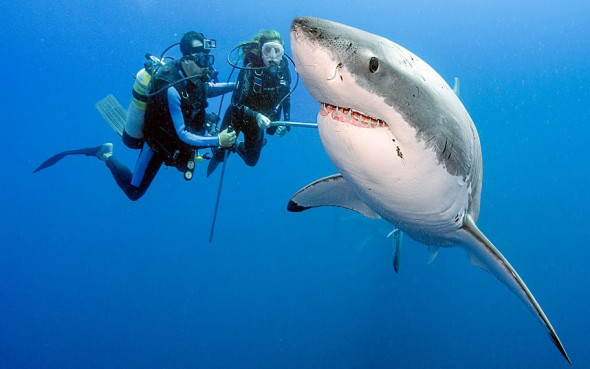
Sharks are one of a kind of Chondrichthyes that have swam the planets oceans for millions of years dating back to the prehistoric realms of the dinosaurs, living through the ice ages, colossal seismic activity that saw many millions of oceanic species wiped out. The shark though a silent stalker and predator remained unscathed.
They were not in any real danger to of traditional Chinese medicine demand or pollution and swam within the oceans with little if any predators, sadly this is hastily no longer factual and the entire species of sharks are being wiped out for a “soup” or medicine used frequently within the Asian medicine market just for tongue and texture.
The species of Shark are not mammalians they are classed as Chordates which is the only unique species of their type separating them from mammals, Chordate are deuterostome animals possessing a notochord, a hollow dorsal nerve cord, pharyngeal slits, an endostyle, and a post-anal tail for at least some period of their life cycles that then develop into the species of which the Deoxyribonucleic acid is programmed to make them into.
Being relatively blind they are agile swimmers yet superb deep sea divers that can smell through an array of senses a drop of blood in the ocean from half way around the world which scientifically is factual although they cannot exactly home in on this being some thousands of miles away there smell is unique from any other form of fish, human or other mammal predator.
The shark noses use ‘smell stereo’ to detect tiny delays no more than half a second long in the time that odours take’s to reach one nostril compared to the other one and that truly is amazing. All species including the deep sea sharks use a combination of directional cues based on scent and the flow of water - to keep them orientated and find what they are searching for.
So the theory that they are human eating man eaters which coincidentally is what the Asians believe hence why they like to consume as well parts the Panthera tigris as in their fake book of counterfeit medicine it states the shark “is a beast and man eater with much energy” that should they consume the shark it will make them a fiery hunter in bed. Its utter nonsense, scientifically untrue, and fairy land tails.
If the delay between the scent reaching one nostril and the other is between a tenth and half a second, the sharks turn their heads to the side where they first smelled the bleeding or anxiously suffering prey such as the squid one of the sharks favorite foods.
If a shark experiences no delay in scent detection or a delay that lasts too long a full second or more they are just as likely to make a left-hand turn as they are to make a right, which makes them rather interesting and a species we must all PROTECT”.
The popular notion that sharks and other animals follow scent trails based on differences in the concentration of odour molecules hitting one nostril versus the other are based on 2010 scientific analyses. It seems that theory doesn’t hold water when one considers the physics of the problem.
Most creatures come equipped with two odour sensors - nostrils or antennae, for example - and it has long been believed that they compare the concentration at each sensor and then turn towards the side receiving the strongest signal.
‘But when odours are dispersed by flowing air or water, this dispersal is incredibly chaotic.’
This recent research on sharks predatory hunting behaviour living has led to findings that has also lead to underwater robots that are better equipped to find the source of chemical leaks, like the oil spill that plagued the Gulf Coast in 2010, 2012 has already seen this research placed to use in many “deep-sea” submersibles now actually using this research to develop state of the technological maritime breakthroughs that have seen many documentaries recorded and sea bed chemical leaks from pipes that are not that easily traceable by other older technologies that can break down at the blink of an eye lid.
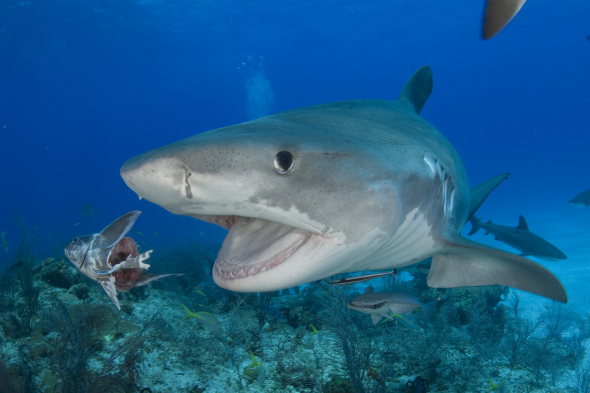
Previous robotic submersibles were programmed to track odours by comparing odour concentrations, and they failed to function as well or as quickly as live animals.
The oil spill in the Gulf of Mexico, and main oil slick was easily visible and the primary sources were easy to locate, smaller sources of Odour-guided robots are an asset for these types of situations with great thanks to the sharks.
The smell organs in the noses of some sharks are able to detect one droplet of blood in one million drops of sea water. They are often attracted to chemicals found in the guts of animals and loiter near sewage outlets so this great research has helped many in the maritime industrial.
Sharks have swam the oceans as far back as we can tell for about 400-500 million years of which there was an estimated 480 species that belong to the subclass of Elasmobranchii, which is in non-scientific jargon cartilaginous fish such as rays which makes them quite different from normal species of fish such are whales that are a sub class of Eutheria distinguished from noneutherians by various features of the feet, ankles, jaws and teeth.
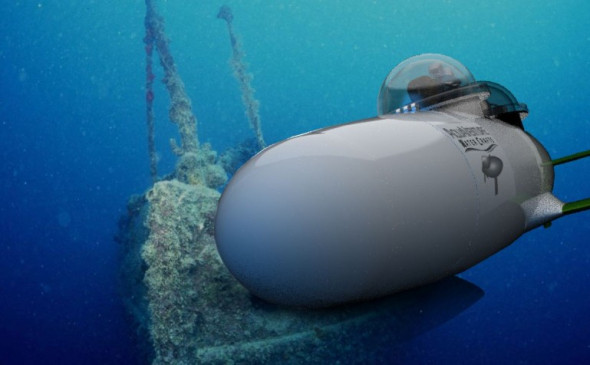
One of the major differences between placental and nonplacental eutherians is that placentals lack epipubic bones although fish don’t have feet, some species that moved from land to waters thousands of years ago have then later evolved in to this “subclass” which the shark species are a subclass of their own from what we know of million year old fossil investigations through archaeology.
Most sharks such as the Carcharodon carcharias, Galeocerdo cuvier, to the Sphyrna lewini are classed as “apex hunters” which basically means they are at the top of the human food chain, they are feared by ourselves even though attacks are rare and just to give you an example of shark attacks verse the bathroom toilet.
Shark attacks for 2011 where 75 global shark attacks, a number closely matching the decade average and the number for 2012 was from what I located to be 62 although that is still to be confirmed surfers and others involved in board sports took the brunt of the attacks, accounting for 60 per cent of unprovoked shark attacks, swimmers 35 percent and divers about 5 per cent.
However the bathroom toilet is quite amusingly odd in 1945, the German submarine U-1206 was sunk after the toilet malfunctioned, and a crewman’s botched repair forced them to the surface killing all on board. King Wenceslaus III of Bohemia was murdered with a spear while sitting in the garderobe (toilet) on August 4, 1306. George II of Great Britain died on the toilet on October 25, 1760 from an aortic dissection. According to Horace Walpole’s memoirs, King George “rose as usual at six, and drank his chocolate for all his actions were invariably methodic. A quarter after seven he went into a little closet. His German valet de chambre in waiting heard a noise, and running in, found the King dead on the floor.” In falling he had cut his face.
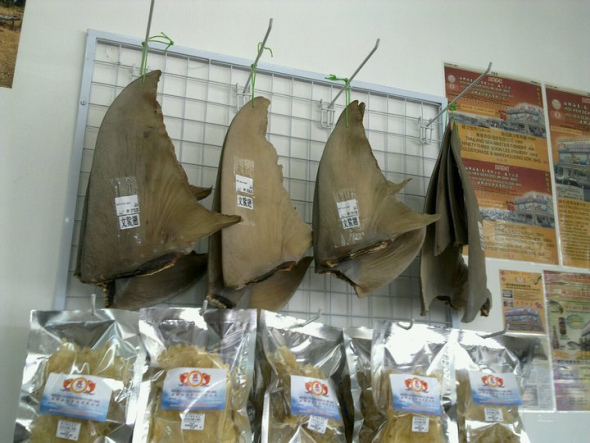
Bathing and showering appear to be particularly dangerous. Overall, about two-thirds of accidental injuries happen in the bathtub or shower — which makes sense, because each can become slippery. But many injuries involve the toilet: standing up, sitting down, or using it. (Yes, about 9% of the total injuries were from overexertion.)
Still believe that shark attacks are common and they are “aggressive out of control people eaters” ridiculously untrue please read on. Overall, mishaps near the bathtub, shower, toilet and sink caused an estimated 234,094 nonfatal injuries in the U.S. in 2008 among people at least 15 years old, the Centres for Disease Control and Prevention reported online in its weekly Morbidity and Mortality Weekly Report. And the injury rate rises with age.
Researchers used emergency room data on accidental, nonfatal injuries and some statistical number crunching to reach their conclusions. Their report is full of statistics (which makes it good bathroom reading, if you have 15 minutes and an Internet connection) on the slips, sprains, contusions, fractures and concussions that can happen in the bathroom, to even death.
- About 81% of the injuries were caused by falls (from the bathroom toilet)
- Women were more likely to be hurt than men
- Two-thirds of all injuries occurred in the tub or shower, though only 2.2% occurred while getting into the shower or tub
- Overall, only 1% of accidental nonfatal injuries occurred in the bathroom, but for those 65 and older, 2.5% occurred in the bathroom.
The report can be located here http://www.cdc.gov/mmwr/preview/mmwrhtml/mm6022a1.htm?s_cid=mm6022a1_w how prevailing and odd but very true, so the next time someone states to you that sharks are people eaters and aggressive please remember when you go to the bathroom that your actually “risking your life” Shark attacks though are very unheard of however the reason why they are classed as man eating killing machines is because the press adore to give them a rather bad name.
Such as “GREAT WHITE TORE MAN’S LEG OF” I suppose the headlines “MAN FELL FROM TOILET SEAT AND DIED” just don’t make GREAT reading which is why the press love to make such a mountain out of a molehill over something that could actually be a probing nip which is what a shark will do before “any such attack” takes place. http://mauinow.com/2011/06/07/study-details-hunting-behavior-of-tiger-sharks/
http://www.livescience.com/12783-shark-attacks-hit-10-year-high.html shark attacks on humans only hit a ten year high from recent accident and emergency reports gained from”2011” from all global hospitals. Extraction from the report states;
“Scientists investigated 115 alleged incidents of struggles between humans and sharks worldwide in 2010. They confirmed that 79 of these were unprovoked shark attacks on live humans”.
“Unprovoked attacks are ones that occurred with the predators in their natural habitats without human instigation. The other 36 incidents included 22 provoked attacks — such as assaults after divers grabbed sharks — including three cases of sharks biting boats, four incidents dismissed as non-shark attacks, five scavenging incidents of human corpses and two cases where there was not enough information to determine if an unprovoked shark attack had occurred”. Please read the report as it gives scientific reasoning as to why they have attacked more within the 365 day period. http://dsc.discovery.com/sharks/why-do-sharks-attack.html
What does all this have to do with sharks and the species under threat though? Good question as most of this does as of lack of awareness, the fright factor, and then of course traditional Chinese medicine the NUMBER ONE REASON.
There are MORE attacks on sharks than there are on any other species of fish, and now we need to start taking note of this as we are losing these amazing species rapidly due to counterfeit Asian pharmaceuticals and the disgustingly tasting shark fin soup.
I have always been a firm lover of wild and “predatory dangerous” animals such as mammals from the big lion to Tiger’s, reptilians from Python to Crocodile, and marine aquatic species mainly the shark. In 2010 I traveled to Shenzhena bustling rather smog filled sky scraped city that had many restaurants and street quick food fixes mainly selling animal parts to eat of which shark fin was on the menu.
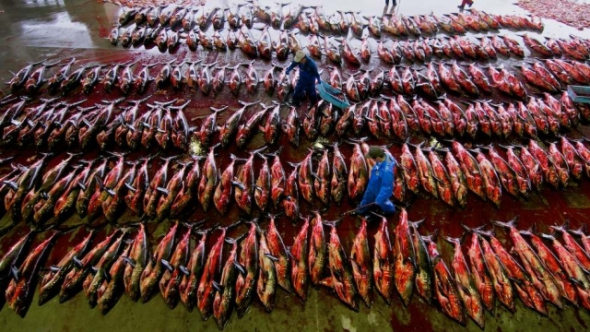
Thousands of Sharks lay dead in a Singapore fishmongers. Within central China it is said by many, and even activists that the sharks are only craved for, for their fins. This is untrue and this picture was taken three days ago in Singapore’s market. The market sells the shark meat and the fins for major profit making Singapore one of the richest Asian islands in the world.
Being a firm lover of sharks and great studier of the species I wanted to see what all the fuss was about and why sharks where being wrenched out of the water like candy from a baby then de-finned and thrown back to the seabed from which they died a slow agonising death from asphyxiation. Being a vegan for thirty years I really couldn’t care at that point as the main objectives was to try this dish to see if this was indeed a great reason why it is used in Asian medicine, to try and ascertain why one of my favorite species of animals was being slaughtered,
The soup smelt repulsively strong and acidic, and when tasting it without almost vomiting, one can only explain that even with a sprinkle of chive that entire first spoon and that being the last, tasted revolting, and more like hot water with the odd lump of shredded fish cuisine within. Oh yes I forgot the tender informed me that it would make me fit and strong even though I already was in 2010 being a healthy vegan for over 30 years.
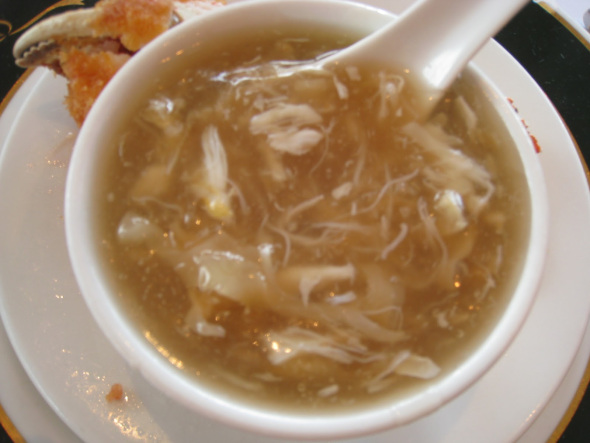
https://www.facebook.com/SingaporeFoodRecipes
DISGUSTING AND BLOODY CRUEL - THIS IS ONE RESTAURANT THAT NEEDS BOYCOTTING
The soup did nothing, and there was no magical dragon like hallucinogenic that gave me the power of a thousand men. “Shark fin soup does not under any circumstances improve erectile dysfunction (not that I tried), enhance muscle power, to even warding of any diseases/illness that I actually picked up from visiting the shite hole city of smog and environmental pollution, it does nothing and has no proven health qualities at all. The one spoon fall of fowl tasting crap was enough to show to me that one of the most majestic creatures on earth was being slain for “monetary gain” and not any magical belief. Utterly unbelievable.
Chinese Shark Fin soup is a “luxury” food served (mainly) at banquets, weddings, parties and cultural masses, however it’s killing the species of and rapidly. The Chinese claim “The shark fins provide texture while the taste comes from the other soup ingredients. The soup originated centuries ago during the Ming Dynasty.
However demand for the soup has increased as income levels of Chinese communities worldwide have risen. International concerns over the sustainability and welfare of sharks have impacted consumption and availability of the soup. So because the Asian consumers require “texture” to their soup then sharks have to be slaughtered in their thousands. There is such thing as we croutons or (toasted bread) that add more texture to this pile of watered down crap which contains one of my favorite animals.
It is estimated that 100 to 200 million sharks annually are killed for their fins alone that’s seen many species now pushed to the brink of extinction and just to give an insight of how bad a problem this is please view the link http://www.foxnews.com/world/2013/01/04/hong-kong-traders-dry-thousands-shark-fins-on-roofs-to-avoid-scrutiny/
Sharks that are caught and their fins cut off are not always dead when their bodies are thrown back into the sea. Without its fins the shark simply sinks to the bottom of the ocean where it dies. Such a horrible death for such a magnificent creature and diet, the whole entire practice is unethical, environmentally damaging and will cause havoc in the biodiversity predatory hunting circle if we lose our species of sharks.
Shark fins, once they are harvested, are then dried to be sold in markets to individuals and restaurants to be made into shark fin soup and sold to the public (especially tourists) for as much as $350 per bowl! The shark fins don’t even add any flavor to the soup. Chicken or pork are used to flavor, the fins are for texture only.
The shark fin soup industry uses a wide variety of relatively large sharks. The majority of these sharks are now under threat. They are slow to mature and breed sharks give birth to a few live young or lay a small number of large eggs depending on species, rather than produce thousands of eggs at a time in the manner of many bony fish. Large sharks also do not mature until they are several years old. These characteristics mean that shark populations cannot support high levels of exploitation = nearing extinction to species vaporisation for a bowl of lousy fowl tasting soup.
Mackerel Sharks
The order Lamniformes includes some of the best-known and biggest sharks. Among them are the great white shark, the basking shark and the thresher sharks. All these species are targeted for their fins, and all are either endangered or vulnerable. The great white shark, for example, might be the most feared species of shark, especially after starring in the ’70s thriller “Jaws.” However, they are more threatened by humans than humans are by them.
Ground Sharks
Carcharhiniformes is another order boasting well-known sharks, such as the bizarre looking hammerheads, whose fins command high prices. The order also includes the family of requiem sharks. These are sharks are your typical sharks, with streamlined bodies and sharp teeth. Tiger sharks, bull sharks and the spinner sharks, which jump out of the water, are all requiem sharks, and they are all taken for their fins.
Dogfish
The order Squaliformes includes all the sharks known as dogfish, the bramble sharks and the rough sharks. They are generally small, benthic, seabed-dwelling sharks that lay eggs and reproduce relatively quickly. Their fins are not of much value, although these animals are often targeted for their meat. The tails of some species of dogfish are used for cheap versions of shark fin soup.
Of the five remaining orders of sharks, carpet sharks, bullhead sharks, angel sharks, frilled sharks and saw sharks, few species are used for shark fin soup. They are mostly small sharks, with small or undesirable fins, and they are not valuable in the shark fin market. Some species, notably the critically endangered angel sharks and the whale shark — a species of carpet shark and the largest fish in the world — are targeted for their meat or oil, but not the fins.
If we don’t take urgent notice now and demand that CITES Convention on International Trade in Endangered Species of Wild Fauna and Flora take more action and demand that law enforcement cease this repulsive and degrading trade then we will see an ocean without any sharks that will unfortunately create a massive aquatic biodiversity nightmare in the aquatic hunting food chain.
Sharks eat many prey, these prey need to be naturally controlled to preserve OTHER species of smaller aquatic marine fish, and should the shark numbers carry on dwindling at massive proportions then we are heading for a global catastrophe.
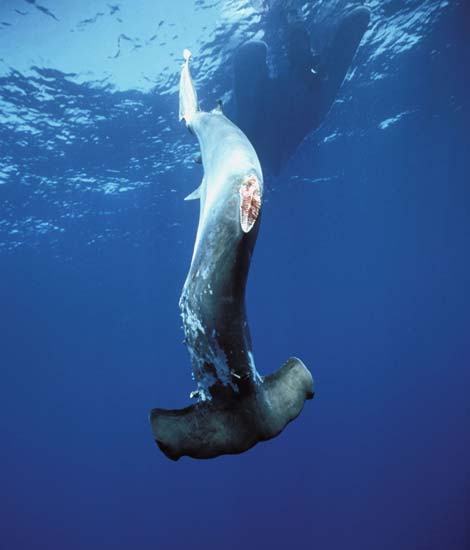
THE SLAUGHTER HAS TO END NOW - PLEASE TAKE IMMEDIATE ACTION AND NEVER GIVE UP HOPE
http://www.hongkong-companies.com/wo-loong-ho-sharksfin-company-limited-b1v6/
https://www.facebook.com/pages/Shark-Fin-Chinese-Bistro-Pensacola-FL/269850188099?fref=ts
PLEASE DEMAND CITES TAKES MORE ACTION NOW BEFORE MARCH OF THE FOLLOWING SPECIES LISTED ABOVE AND BELOW.
Mackerel Shark
Ground Shark
Dog fish
Bullhead shark
Angel Sharks
Frilled Sharks
Lemon Sharks
Saw Sharks
Hammer Head Shark
Reef Shark
PLEASE CONTACT / DEMONSTRATE / PETITION / - 33 DAYS LEFT BEFORE COP 16TH MEETING
CONVENTION ON INTERNATIONAL TRADE IN ENDANGERED SPECIES OF WILD FAUNA AND FLORA;
CITES Secretariat
International Environment House
11 Chemin des Anémones
CH-1219 Châtelaine, Geneva
Switzerland
Tel: +41-(0)22-917-81-39/40
Fax: +41-(0)22-797-34-17
Email: info@cites.org (email them hard to get a response)
CONTACT IUCN (International Union for Conservation Nature)
IUCN Conservation Centre
Rue Mauverney 28
1196, Gland, Switzerland
Opening hours: 8:00 to 17:30 Monday to Friday (except Swiss public holidays).
Phone: +41 (22) 999-0000
Fax: +41 (22) 999-0002
Dr J C Dimetri V.M.D, B.E.S, Ma, PhD , MEnvSc
Please support our fundraiser for Benue http://fnd.us/c/3PFe2
Kami ingin mengingatkan orang-orang yang mengirimkan pesan yang tidak diinginkan bahwa situs Anda akan menutup jika Anda tidak berhenti.
We wish to remind all that visit that should you spam “your sites and the server sending to individual registering shall be reported with IP shut down regardless of whom you are” we take spamming seriously and we advise you to cease now.
CHINA STATED IN 2010 AND 2011 THAT THEY WHERE GOING TO BAN CIRCUSES AND THE DOG AND CAT MEAT TRADE (LIES)
ANOTHER ASIAN GOVERNMENTAL LIE - MEDIA FALL FOR THEIR LIES - CHINA CANNOT EVEN REMOVE THE RHINOCEROS HORN OR IVORY THIS VIDEO BELOW IS JUST A PRIME EXAMPLE TO SHUT ACTIVISTS UP - THEY WILL CARRY ON AND STILL IMPORT..
11 months ago CNN stated that China was going to ban SHARK FINS - What China meant was (they where going to hide them from activists which is a common lie from Asia) video taken over three ago.. How coincidental.
Environmentalism - chapter 11 - Blood Fur

I don’t normally speak much on the fur trade however I have noticed in the last ten years that the trade has taken of massively again and it’s now a major international business once again with companies taking millions of dollars per year.
The trade never really did die off to a full extent however with much awareness and celebrity support and vast protests the trade was hit with a substantial loss in profit margin seeing some fur traders eventually putting down tools and moving on.
Climate change cannot be blamed on the sudden increase and influx in the marketing levels here nor can a drop in sales as of wide spread economic recession that’s seen hundreds of thousands made redundant to small high street stores pushed in to liquidation at a rate of 6 a day in the European Union, not to mention large chains this year in 2013 hitting the headlines of the press and media closing resulting in thousands of people made jobless.
We believe the massive upsurge in the fur trade has been caused by a lack of awareness and high profile figure’s that once went against the fur trade now going back to the trade which is seeing more younger people purchase fur thus more animals placed through a life of misery then extreme torturous death just for a fur coat.
I really cannot compare the fur trade to factory and cattle land farming or abattoir abuse as they are both as bad as one another and within the abattoirs the animals hide from cows mainly is used as a bi product to make leather chairs and upholstery, shoes and automobile furnishings.
The fur trade rose from the exploration era mainly of polar of arctic travel which furred animals were used to keep explorers warm, massive urbanization saw many families from these cold areas of mainly indigenous people then move closer inland of which they sold their furs and skins on the street markets to non-indigenous people thus passing on the trade to others creating a horrifying new trend without them really knowing what the future lay ahead for these animals from mink, rabbit, canine, feline, and bear to more.
Exploration teams from Russia, Canada the Americas and Antarctic also brought back with them forms of fur from Polar bear to Artic fox fur that was passed on to others thus seeing more people craving the “luxury” of a real warming fur coat, trim, to gloves, hats boots and more.
The fur trade can be roughly located back as far as 500/600 AD however the trade didn’t really pick of until the 1500’s when exchanges where made between Indians and Europeans. The Europeans are more to blame for the trade hence why there is by far more fur trade and capture in Europe than any other part of the world with China being to date the largest exporter mainly of imported “near finished products” from the European Union and America.
The label at the end of the coat or other material that’s last trade route was for example China will show produced or (made in) in China, however it doesn’t mean that it was mostly manufactured there. It’s much cheaper nowadays to export a luxury product to another nation where other added products and labour is much cheaper which companies practice now regularly. Once the item is finished for example a simple inner lining sown within with, a label will be placed on the finished product stating its final destination as “made in” but not “caught in or 80% produced in”.
The trade took off when the Europeans started their first polar explorations which then unfortunately saw fur “farms” established in North America back in the 1860’s then further on in Canada roughly from the 1890’s of mainly mink and wild fox.
Europe now accounts for some 60-70% of all fur farming with Denmark leading in the mink production of some 28% with China actually being the smallest producer along with the Baltic States, Netherlands and America. The Netherlands is now phasing out fur farming which we will see in the near 2020’s all fur farms banished from the Netherlands. There are 5 licensed mink farms in the Republic of Ireland and, between them, it is estimated that 200,000 to 225,000 mink are farmed a year in appalling conditions.
The United Kingdom banned all fur farming in 2002 along with Croatia then following along with Austria too. There is also wide spread condemnation of fur farming, trapping and trade of which is seeing many organisations and conservationists to animal welfare charities now fighting to end this sick repulsive and bloody barbaric trade.
In the early and mid-1970’s wearing a real fur coat was seen as an extravagance with many rich and famous people purchasing fur not really understanding the cruel and immoral practices that animals are put through when slaughtering is carried out. Nor do they see that trapping and holding in such solitary confined enclosures animals suffering from sores, rotten flesh wounds due to poor farm husbandry, species fighting as of overcrowding to psychological trauma, and death is some cases. The standards by “some” ethical animal welfare groups regarding farms around Europe, and internationally confirms the farms to only be in “fair to moderate standard with neglect and abuse rampant” which conditions are not even fit for a canine or feline.
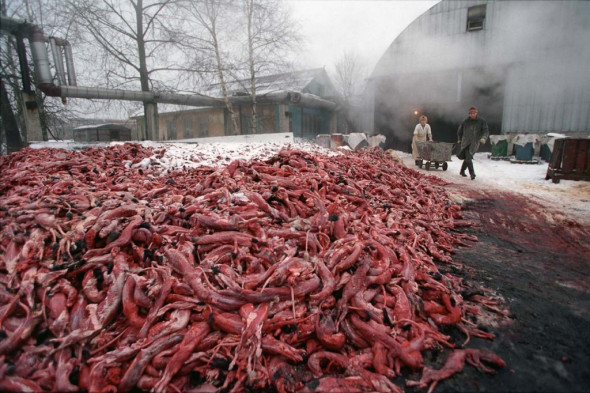
Emotionally not a pretty site - Picture taken by Sergey Maximishin of a Russian fur farm’s waste pile.
It would be politically incorrect for me to state that fur farming, production and trapping reduced in size as of “animal rights extremism” as this was on a low scale in proportion. And no matter how many (extremist) activities took place copious fur farming and production progressed as the insurance firms were willing to pay out for the damage caused by animal “rightists” and not necessarily the A.L.F/A.R.M as these “non- ALF/ARM combatants” were seen to be opportunists hell bent on causing criminal damage without a real motive or plan that saw many animals once the “rightists” had released them placed back into poorly maintained huts. Insurance companies where paying out to the big farmers as of the “demand” for their top quality skins even though it was disgusting.
However some smaller farms both internationally and within Europe where shut down via arson or harassment to damaging the farmers hard finically which insurance companies couldn’t keep up with continued pay-outs simply because they were new to the market or lacked financial gain to experience.
Demand decreased primarily due to high priced identical line products and lack of design lines from the designers and marketers that where still seen back in the 1970’s-1980’s as vastly uneducated in this area. Campaigns from groups such as PETA (people for the Ethical Treatment of Animals) did play a decent role in this area that aided more trade to decrease however it didn’t and never has halted it even with celebrity pressure and television advertisements to covert militant surveillance uncovering some shocking footage of fur farm cruelty.
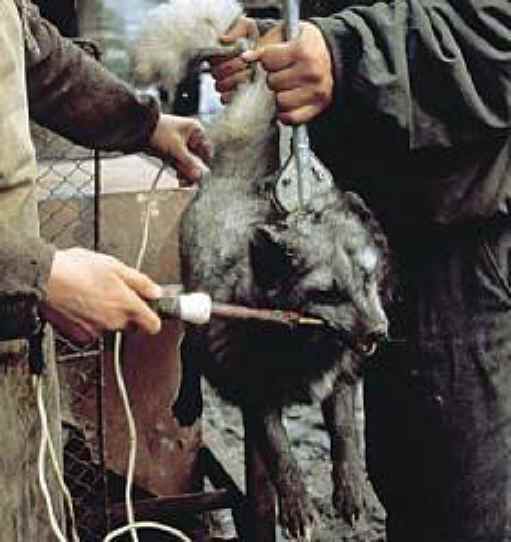
Fox - Electrocuted to produce less damaged garments via the traditional method of slaughtering.
Sales have regrettably though soared since the 1990’s mostly in China via imports and Europe with new technologies, news designers and more “youth” to the younger rich generation evolving wanting the latest design. Although the trade did take a pounding from PETA with many celebrities explaining the cruel and repulsive barbaric methods used to capture wild animals for fur via trapping, including “fur farming and breeding” and slaughter, some of these celebrities have gone back to their old ways and are again wearing fur.
Was it money and prospects of more sponsors that made them switch back to fur? We believe so hence why we are not a big affluent supporter of PETA as they aren’t a rescue as explained to ourselves by the United Kingdom PETA support in an email regarding Sunder the Elephant plus they use high profile dignitaries and celebrities to carry out their work whilst talking donations for this form of awareness which is more than bribing it’s dirty awareness that we despise.
The suffering;
I have outlined in bullet points the extreme suffering that many animals are put through below to gain fur;
- Animals such as foxes, mink, ferrets, and sables (an animal in the weasel family) spend their entire lives stacked on top of one other in barren cages with nothing beneath their feet but wire mesh.
- Animals at the top of the cages are a little more fortunate as they do not have urine and faeces falling on to them like the animals below as of the opened top cages.
- Animals that are caught in traps desperately try to free themselves thus causing immense pain, suffering to even eating their little legs of to save themselves that sadly then succumb to death.
- 9/10 many animals are forced to spend their lives in cramped confinements with other animals that have no shelter from the wind, rain, freezing cold or snowy temperatures, lack of water, feed and are left with the same bedding for days on end that they sit rotting in.
- Nearly all the animals suffer from psychological trauma from head bobbing, pacing, cage bashing, eating their own faeces, self-mutilation, and cannibalization, to species conflict.
- Minks that normally roam the wild spend most of their days frantically pacing up and down the cages scared witless trying to escape biting their own tail out of anxiety and cognitive stress.
- Fur farms inflict such terrible psychological trauma on animals that in one study of vixen (female foxes), half of the kit loss that occurred prior to weaning was attributed to infanticide behaviours, primarily mothers eating their young.
- Many animals suffer skin sores that are similar to bed pressure sores in humans however these sore aren’t caused by resting in the same position for many hours, they are regrettably caused by the animals sitting in their own urine and faeces.
- Many diseases form in farmed pens of fur farmed animals that don’t in wildly captured animals, the animals suffer tremendous pain, suffering, to prolonged death as of poor farm husbandry.
- After suffering through years of confinement, animals are killed and skinned for their pelts. Killing methods are typically cheap, crude, and performed in such a way so as not to damage the animal’s fur; there is no such thing as humane “euthanasia” on a fur farm.
- Caught, caged then farmed for the rest of their life the capturer either keeps the animals to breed on, or slaughterers them by breaking their neck, farmed animals suffer at the hand of their slaughterer from gassing in chambers of which the animals take up to 10 minutes to die or from strangulation, electrocuting via the anus and mouth, or just skinned alive as the fur is less damaged. (Can you imagine being skinned for life)?
- As quoted above on U.S. fur farms, one of the most frequently used methods of killing animals is electrocution: the “farmer” puts a metal clamp in an animal’s mouth, a metal rod in the anus, and sends a high-voltage current surging through the body.
- Then there is lethal injection of various chemicals that kill through paralysis, which can result in immobilized animals being skinned alive and neck breaking.
- More than 36 million animals die on fur farms around the world each year. Thirty-one million (or about 90 per cent) of these animals are mink. Foxes account for another 4.5 million, while chinchillas, sable, ferret (usually marketed as “fitch”), coypus (an aquatic mammal also known as “nutria”), and raccoon dogs (not to be confused with the North American raccoon), account for most of the remaining half-million animals. Due to the recent drop in pelt prices for mink and fox, some of U.S. fur farms have attempted to “diversify” by raising bobcat, coyote, raccoon, and beavers, along with coypus and rabbits — all in equally abhorrent conditions.
- When the United Kingdom, Scotland, and Wales stated this “Fur farming is not consistent with the proper value and respect for animal life. This is a moral issue that goes beyond welfare considerations. In the 21st century, animals should not be killed just for the business of stripping their skins off their backs … In a modern society there should be room for Government to make ethical decisions and it is right and proper for the Government to have introduced this ban”.
- The United States then stated this “the U.S. government seems not to agree with this assessment. In fact, no federal laws regulate how the animals on the nearly 400 fur farms in operation in the U.S. are to be housed, cared for, or killed, fur farming shall continue”.
Animals used for farming;
- Beavers
- Chinchillas
- Dogs and cats
- Foxes
- Minks
- Rabbits
- Raccoons
- Seals
- Bears
- Arctic fox
Animals that are used for the “illegal skin/pelt trade that often becomes mixed in with these brands are;
- Tiger (critically endangered)
- Cheetah
- Leopard (critically endangered)
- Snow Leopard (critically endangered)
Celebrities that wear fur that should be setting a good example on the younger generation;
These are simply a handful.
- Lady Gaga
- Lindsay Lohan
- Paris Hilton
- Nicole Richie
- Jennifer Lopez
- Beyonce
- Jay-z
- Katie Eary (Designer)
- Hardy Amies (Designer)
- Ulyana Sergeenko (Modelled for the Time’s)
- Kim Kardashian
- Ciara
- Jessica Alba
- GIORGIO ARMANI (Designer)
- Rihanna
- Kourtney Kardashian, Scott Disick and their son
- Chloe Green
- Rapper Big Boi
- Anna Karenina
- Poppy Delevingne
This is just twenty and there are by far many more such as David Beckham and Victoria Beckham, Kate Moss to Naomi Cambel all of these celebrities are still wearing and still flaunting the repulsive disgust without a care in the world of how that dead animal around their waist, neck or head suffered on the fur farm, or whether it spent days in a field trapped in a leg jaw trap suffering agonising pain and discomfort before having its neck broken in two.
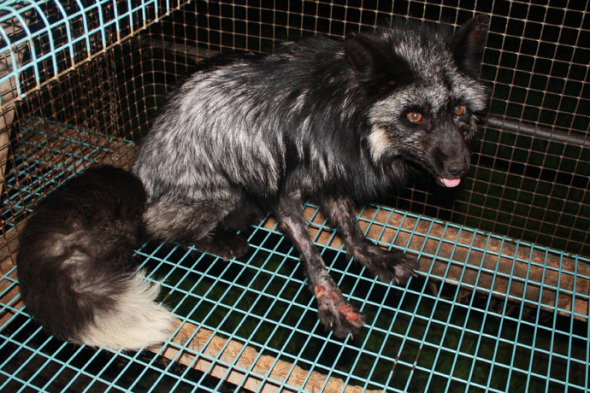
Sores on his feet, dehydrated, as well as psychologically disturbed this poor fox still suffered, in pain, eating his own feet out of pure anxiety and cage stress. This is no way to treat an animal, this is disgusting..
Conditions on fur farms throughout Europe are fair to standard with neglect common practice. An undercover investigation by Compassion in World Farming - Ireland and Respect for Animals in 2003 found that mink were kept in cages about 3 foot long and 1 foot wide, plus a small nest box at one end. Fox cages had a floor area of about 4 foot by 4 foot and were about 28 inches high.
A Council of Europe Recommendation Concerning Fur Animals (1999) lays down new cage sizes for fur animals, which came into place in 2010. The new cage sizes are slightly bigger than the cages that were filmed in a 2003 investigation. Fox and mink cages are usually in rows inside buildings that have open sides. The animals’ droppings fall through the wire mesh floor of the cages.
Farmed mink and foxes are fed on a porridge-like food made from chicken, meat and fish offal. This is placed on the top of each cage and the animals eat it through the wire mesh. Mink and foxes are confined in cages throughout their lives until they are taken out to be killed.
In a recent press article read here http://www.huffingtonpost.com/christina-anderson/wearing-fur_b_2239881.html?utm_hp_ref=fb&src=sp&comm_ref=false some celebrities give their reasoning as to wearing fur, if only they were taken to a fur farm or wild trapper to view how cruel the conditions are to what these animals go through it “could” change their ways to even supporting the no fur industry.. What annoys ourselves the most is some animal rights groups believe that “trapped animals” are treated (humanely) there is NO humane treatment of any animal that’s to be murdered for human gain.
Fur trade is cruel, barbaric and primitive and although it dates back to the cave man era does it give us the moral rights to then wear it as we believe the animals have been treated fairly? Although PETA claim to have scored victory over the some retailers as stated here “PETA has scored victories by getting major retailers like TOPSHOP, Forever 21 and J. Crew to stop selling fur items - and scored messes by pelting flour bombs at Paris Hilton when she was in London”. Its hasn’t made any difference to the TOPSHOP industry as seen here https://www.facebook.com/photo.php?fbid=593287620698148&set=a.188186667874914.55931.176078879085693&type=1&theater “Chloe Green, television personality, shoe designer and daughter of Top shop owner, paired her gorgeous Barbados holiday tan with a leather jacket with fur trim”
There are many fur retailers in the world from London Canada and Asia
http://www.thelondonfurcompany.com/about.htm
http://sitebuilder.yell.com/sb/show.do?id=SB0001741542000020
http://www.mayfair-london.co.uk/ladies_fashion-FursofMayfairLtd.htm
http://www.furinsider.com/ (Sweet fur stories)
http://www.yellowpages.ca/bus/Quebec/Montreal/Nicholas-Turgeon-Fourrures/1807739.html
The top listed retailers sell mainly animal fur with little faux fur “fake mixed” nylon material fur within their premises. Prices start from $2,000 to $70,000 for a mixture of animal skin pelts.
In a 2010 investigation in 2010 the investigations showed the following;
In their own words;
For the past year-and-a-half, the Animal Rights Alliance investigation unit has been mapping out the Swedish fur industry. We have combed through environmental inspection protocols, court documents and research reports and what’s more - we have visited one-fifth of the 75 mink farms in Sweden to see them for ourselves. We have discovered major environmental violations by an industry that is already highly-criticized. Above all we have discovered the mink. Clever, beautiful wild mink imprisoned in shed after shed, housing row after row of small dirty cages.
Mink that will never see any water beyond what comes out of a water nipple even though they are hunters that naturally spend half of their life in water. Mink that express so-called stereotypical behavior, endless repetitive motion without purpose, a feeble attempt at dealing with stress and frustration.
We already knew that this would be the case. We were prepared for meeting curious eyes behind bars from animals that are so psychologically-broken that they incessantly circle their cages. We knew that it would be bad, but reality on the farms was worse than we could have ever imagined.
Scandinavian Fur Farm - Please click the link to view the horror
We understood that the mortality rate would be high. Several reports show that one out of every four or five animals die before they reach 6 months of age. But we didn’t know how they die – and how they suffer. Now we know. We have seen pups chewing on their dead littermates, entire litters where every animals has had its ear bitten off; young animals with gaping wounds on their heads; and fully-grown mink that twist and turn in agony, screaming in panic from pain and illness that minutes later ceases but only with their death.
It has been terrible to see all of this without being able to do anything about it. On our worst days, we felt completely powerless. But we’ve been driven to continue toward our goal – to make public the horrific animal cruelty that occurs on the farms. This animal cruelty cannot continue in silence.
The fourth paragraph of the Animal Welfare Act clearly states that all animals must be allowed to express their natural behaviours and that they must be protected from unnecessary suffering. But Sweden continues to allow mink to be bred and kept in mesh cages that are no bigger than 30 x 90 centimeters before being killed to produce an unnecessary luxury product that nobody needs. In 2003, the Swedish Commission of Inquiry into the Fur Industry gave Swedish fur farms until 2010 to comply with the Animal Welfare Act. Seven years later we can conclude that the Swedish fur industry has done nothing to improve conditions for mink on fur farms. It is high-time that the fur industry is made history.
The Animal Rights Alliance
The Animal Rights Alliance is a not-for-profit campaigning group that speaks for the animals. Founded in 2005, we have since then brought about the criminalization of bestiality, organized five veggie food conventions and exposed the Swedish pork industry through undercover investigation. Our work for the animals is completely dependent on donations, supporting members and active volunteers.
STEREOTYPICAL BEHAVIOR
“Animals shall be kept and maintained in an environment that furthers their good health and allows them to behave naturally”. – Animal Welfare Act (1988:534), 4 §
We have filmed evidence of stereotypical behaviour on thirteen of the fifteen farms that we visited. The stereotype, by which we mean incessant repetitive motion that serves no purpose, is a feeble attempt by the mink to deal with stress and frustration. It is a common symptom of an animal’s natural needs not being met “The majority of mink show typical signs of derangement that animals express when confined to areas that are too constrictive” – Sverre Sjölander, Professor in Zoology.
SICK AND INJURED ANIMALS
“A sick or injured animal shall be given necessary medical attention, if the illness or injury isn’t severe enough to justify the animal being put down immediately”.
Animal Welfare Act (1988:534) § 9.
We have found sick animals with infected eyes and ear; unconscious, convulsive and dead animals were found on two-thirds of the farms. Maimed, bleeding animals with torn-off ears, large gaping head wounds and missing limps were found on eleven of the fifteen visited farms. The horrific injuries are the result of fights caused by crowding, in shockingly small cages in the wild mink interact only to mate – but the injuries are also oftentimes caused by self-mutilation. According to 2 § of the Animal Welfare Act, animals are to be “treated well and are to be protected from unnecessary suffering and illness”.
“If a cow becomes sick, then we’re called immediately. But the mink are so many that if one animal becomes sick, then we’re not called – the animal has too little economic value for the farmer. We only get called if there is an epidemic. But every animal has an intrinsic value and the Animal Welfare Act clearly states that if an animal becomes sick, then it must be treated or euthanized. Large farms like mink farms have so many animals that it can take time before illness is discovered”
– My Leffler, District Veterinarian who used to work on mink farms.
DEAD ANIMALS IN THE CAGES
On 80% of the farms, we found dead animals in the cages – in most cases, the carcasses were left among other living animals. In many cases, the carcasses had been half-eaten by their mother and siblings.
“In the natural world, it isn’t normal for a mink to be forced to be around another dead mink. When it happens on a farm, it can lead to cannibalism because they are so under stimulated and don’t know how to react to the situation” – Mark Collins, Veterinarian
DIRTY CAGES
On 67% of the farms, we found cages where large amounts of faeces had piled up, oftentimes in thick layers. Mink avoid their own feces so when the cage fills up with waste, an already small space becomes even smaller.
ILLEGAL SEWAGE RUNOFF
Manure runoff could be documented at 80% of the farms. Mink manure contains high levels of nitrogen and phosphorus and causes contamination of water and soil if leaked out into the environment. Mink farms are therefore classified as environmentally-hazardous operations. By law, manure must be stored in such a way that it is sheltered from rain while preventing soil seepage.
ILLEGAL HANDLING OF CARCASSES
“Carcasses awaiting transport shall be stored in such a way that disease cannot be spread through contact with wild animals. The waste shall be stored separate from living animals” – Board of Agriculture Regulations 2009:6, section K 14.
Dead mink that had been left to rot throughout and around the farm property, or were otherwise disposed of improperly, were found on 73% of the farms, even though all carcasses must be immediately removed and stored, preferably frozen. Many carcasses had been left to rot for at least 6 months, since the pelting season last November.
CANNIBALISM
We have documented cannibalism on half of the farms. Mink females that kill their young and littermates that kill and eat one another is more the rule than the exception. Cannibalism is caused by stress and lack of stimulation. The mink have no release for their hunting instincts and those mink that fall victim to attack have no possibility to take flight or cover in their tiny cages.“Animals on fur farms have high levels of stress and this can cause cannibalism” - My Leffler, Veterinarian.
In a 2012 investigation the designer Giorgio Armani;
In PETAs own words;
A disturbing new undercover exposé of rabbit fur farms on two different continents shows that rabbit slaughter, no matter why or where it occurs, is always cruel. The video, narrated by actor Gillian Anderson, shows rabbits kicking and screaming during slaughter. After the skin is ripped from the rabbits’ bodies, it is sold to designers such as Giorgio Armani—who uses rabbit fur in his new designs.
The undercover investigations of rabbit fur farms in China and France—two countries from which Armani buys rabbit fur—revealed pitiful living conditions for rabbits, who are confined to tiny wire cages before they are slaughtered.
In the video footage from the investigation, workers at the Chinese farm pull rabbits out of cages by their ears and shock the screaming animals in the head with a handheld electrical device, often multiple times. Rabbits with slit throats can be seen twitching and shaking, with their eyes wide open, before they die.
Armani now sells fur, including rabbit-fur coats for babies and children. The new designs mean he has broken the promise he made just last year when he said, “I spoke with the people from PETA, and they showed me some materials that convinced me not to use fur.”
Please contact Giorgio Armani and urge him to keep the promise that he made by permanently removing all fur from his collections.
Please also send polite comments to:
Giorgio Armani Corporation
114 Fifth Ave., 17th Fl.
New York, NY 10011
212-366-9720
Still believe fur is ethically correct? We don’t and we are fighting this blood soaked war silently but surely and will cease this repulsive disgust.
Email us for more information at
externalaffairs@international-animalrescue-foundation.org.uk
info@internatinal-animalrescue-foundation.org.uk
Donate for a Zoologist in Benue http://fnd.us/c/3PFe2 read more in the link..
Together we can stop abuse – Together we can make change happen
Dr J C Dimetri V.M.D, B.E.S, Ma, PhD , MEnvSc
Apparantly the video below is “ecological mink farming the exact same as “Europe and Canada” so the narrator quotes..
Ivory Trade 2013
They are the largest land mammal that walks the earth to date weighing an estimated three to five tons depending on species, they can drink fifteen litres of water in one go through their trunks and drink in a day 225 litres. Walking the continents earth for over fifty five million years of which they have a life span of over forty to fifty years these beautiful gentle giants I am talking about are the elephants.
The generic name for the two species of Elephant is the Indian Elephant Elephas maximus, and the much larger African Elephant Loxodonta africana. There was from fossil records a total of three hundred separate species of Elephant dating back some 55 million years however in 2000 AD a DNA analysis of both the two subspecies of L. africana and E. maximus revealed there was actually three species of Elephant on the planet to date as the forest Elephant was no more closely related to the Savannah Elephant than it was to the Indian Elephant.
Lori Eggert of the University of California however after becoming used to his findings found that there was most likely five species of Elephant in total although this actually has to be fully confirmed. Elephants are not just the largest land mammal that walks the earth but they also possess the largest teeth which is their tusks excluding their molars and incisors that they normally use to forage for food, and protect themselves from predators, uproot trees and root for vegetation.
The heaviest recorded tusks from an African Elephant weighed in at a whopping 226kg or 465Ilb Back in the 1800’s although there have been some other finds back in the 1900’s 117kg or 258lb. To top the record book though the longest tusk ever found belonged to the extinct Palaeoloxodom antiquus germanicus, the Straight-tusked Elephant. On average this magnificent animal had tusks 5m or 16.5ft long. The heaviest tusks ever known belonged to the Colombian Mammoth Mammuthus columbi, these weighed 226kg or 498lb.
Elephants are omnivores meaning they only eat mainly natural green vegetation, Elephants spend 16 hours a day collecting food and can consume 300-600 pounds of food a day. The eat grasses, seeds, flowers, fruits, bamboo, twigs, bark and roots. The infantile Elephant weighs in at roughly 260 pounds from birth of which the mother’s gestation period is from usually twenty two months. Males weight about 12,000lbs and females weigh between 8,000 and 11,000 lbs.
There is much confusion with regards to the actual population of Elephants within the wild, back in 2000 the total number of Elephants was “estimated” at 300,000-600,000 for the wild Elephants alone which then gave rise for some critics to believe that they were not as endangered as one believed. These numbers though cannot be backed up with any real pivotal evidence to date.
African elephants may be comprised of up to three different subspecies, Desert (largest specimens, may number 500 or fewer individuals) forest (smallest animals, 19,000-140,000) and Savannah (at least 200,000). Wild Asian elephants (in South Asia and Sumatra) are believed to number 35,000-50,000. There are a lot of domesticated Asian elephants, though, still used as working animals. Asian elephants are distinct from the subspecies of pygmy Borneo elephants, which only number about 1000 in the wild.
http://www.nytimes.com/interactive/2012/09/04/world/africa/illegal-ivory-trade.html?ref=africa
The total population though of Elephants cannot be proven no more from as far back as 2005-6 which is a concern to us at International Animal Rescue Foundation © due to the copious out of control poaching levels that are reaching gargantuan proportions all over Africa and Asia,
January 24th 2012 World Wide Fund for Nature demanded that a moratorium on deforestation be placed with regards to the Sumatran Elephants plummeting population levels so if levels where that high as some unqualified conservationists have quoted along with so called wildlife biologists then why would the WWF order such a notice of ban. One must remember that Elephants are not just in danger from the poachers they are in danger due from us HUMANS that still abuse the planet through our continuous demand for paper and wood products to fast food wrappers.
The news report quoted “(Elephas maximus sumatranus) was downgraded to critically endangered on IUCN’s Red List of Threatened Species on Tuesday, prompting the environmental group WWF to call for an immediate moratorium on the destruction of its rain-forest habitat, which is being rapidly lost to oil palm estates, timber plantations for pulp and paper production, and agricultural use. Palm oil plantations are wiping out massive areas of land timber and peat forest now in Malaysia and Indonesia of which 12 footballs sized fields of rain-forest are cut down a day every day leading to four critical problem areas here.
- Carbon emission increase
- Environmental warming through climate change
- Human and species conflict/poaching
- Flora and fauna extinction by over consumerism and lack of recycling, reusing and reducing
By IUCN (International Union for Conservation of Nature) estimates, the population of Sumatran elephants has declined by more than 50 per cent since 1985. During the same period, Sumatra lost nearly 70 per cent of its lowland forest — the preferred habitat for elephants. The loss has been particularly steep in Riau province, where remaining lowland forests are increasingly at risk of conversion for industrial plantations. WWF says that less than 20 per cent of Riau’s 1985 population of elephant’s remains of which is now 2013 at critical unstable levels due to human and species conflict.
Moving forward to Africa the WWF has quoted although these reports cannot be substantiated that there are between 470,000 to 690,000 Elephants in the wild of Africa. This figure stands for the Loxodonta Africana that is listed as vulnerable these figures where taken before the 2006 census of which some media actually still rely on which is non-factual. No media or individual should be quoting numbers that have not been made evident by ourselves to other conservationists.
“Malaysian authorities seized more than 1,000 elephants tusks, possibly the largest seizure ever (click here for story). 24 tons of ivory were hidden in large, wooden boxes labeled “floor tiles.” The tusks traveled a circuitous route to reach Malaysia. “. . . originating in the small West African nation of Togo, then going north to Spain, then east to Malaysia’s port of Klang and eventually destined for China. It is not clear where in Africa the ivory was from; conservationists say Togo is an emerging hub in the underground ivory trade and therefore the ivory might have been drawn from elephants killed across the continent”
The questions that some conservationists and theorists ask are, if there is such a vast amount of African Elephants that WWF have quoted for 2006 then why the ivory ban for? One would simply lift the ban thus controlling it = less poaching. Of course this is more easily said than done though.
Lifting the ban then selling the confiscated ivory from poachers and smugglers would most likely be a smooth transition at first however when the stocks run low then the problems of “keeping the demand running and Elephant life sustained” will become by far more apparent.
To remove an Elephant’s tusks (teeth) you would have to tranquilize the mammal first, and this is where problems start which I have outlined below in simple factual points.
- Elephants weigh in at eleven thousand and eight thousand pounds per male and per female. To tranquilize a mammal at this weight and size is extremely dangerous and can/will have fatal consequences or in other terms the likely hood of the Elephant coming round from tranquilizing is 50/50, and with demand being high then conservationists/farmers would be placing the animal at risk of cardiac arrest to death.
- Farms would have to be set up to keep the Elephants local and not wild thus making the process tusk removal quicker however as stated above would one really place a 3-4 ton Elephant at risk of death just to remove its tusks. Security on the farms would have to be set up to keep “potential opportunist poachers out” of which their buyers would not want to pay for the ivory. Security resources would also be removed away from any wild Elephants thus increasing poaching risks.
- Elephant’s tusks are rootless like the human milk teeth of which they only grow one pair located with each single tusk either side of their trunk. The tusks do not contrary to online and theory beliefs grow back like molars and incisors within their “mouth”. Once the tusks have been removed then the Elephant is without its “tools” that are needed to find food, uproot trees or locate water to defending itself from predatory attack. With growing demand in Asia for ivory then upon tusk removal the Elephant can no longer be placed within the wild thus decreasing its life span and young protection. Demand would kill the Elephant as of it being so high in Asia and farms would simply not be able to sustain large populations of Elephants without tusks and with growing tusks it would simply be a conservation/agricultural nightmare. The Elephants would also most certainly have to be artificially inseminated to keep up with demand to once seized stocks have run low. The gestation period is roughly 22 months and even then when the infantile Elephant is born it has no tusks. So lifting the demand is pointless and would eventually kill of all African Elephants. Hence why the trade must NEVER be lifted.
- Removing the tusks of Elephants would lead to increased infections within the tusk area which again would place the Elephants life in danger due to the size of the mammal the largest on earth and tranquilizing it to locate and treat the infected areas.
- Security would be needed more on the farms as quoted which would decrease the security in the wild.
- Can farms sustain such vast populations of Elephants and the demand growing? We simply would be looking at an agricultural nightmare waiting to happen.
- Females between 14 - 45 years may give birth to calves approximately every four years with the mean inter-birth intervals increasing to five years by age 52 and six years by age 60 so again in reality lifting the ban wouldn’t work with massive demand. Rhinoceros horn grows back however Elephants does not. Hence why both species need protecting.
African elephants live predominantly in the central and southern parts of the continent, where the large open Savannah’s are. (Elephants are grazers and prefer open country). The Elephant species are mainly confined to Kenya, Zambia, Zimbabwe, Botswana, Mozambique, and the northern parts of South Africa. Asian Elephants mostly reside in Vietnam, China, Malaysia, Indonesia, India, and mountainous regions too.
Poaching is unfortunately rife in all of these regions and continents of Africa and Asia, in Africa alone. During the 1970’s and 1980’s there was an estimated 1.3 million Elephants in Africa alone. The ivory holocaust though knocked these numbers down considerably to five hundred thousand in total for Africa alone.
COMING TO A STORE NEAR “YOU”
Every year in Africa alone there are from census and poaching reports obtained by scientists a total of 32,000 and 38,000 Elephants slaughtered for ivory and now with growing demand the figures are becoming increasingly high.
Mr Tom Milliken of the wildlife trade monitoring organisation, TRAFFIC: quoted “Since 2004 there’s been a rapidly increasing trend in the illegal ivory trade. And this is very worrying because it follows on from a progressive decline in the ivory trade.” In the last five years, the price of ivory has sky-rocketed.
There are reports of Asian dealers paying well in excess of US$1,000 per kilo - such is the demand from the burgeoning population of consumers in China, for example, who can now afford ivory products.
A combination of the soaring value and the fact that wildlife crime is a low priority for most law enforcement agencies means that ivory poaching and trafficking has attracted the interest of international criminal syndicates. Sam Wasser of the Centre for Conservation Biology at the University of Washington, Seattle quoted “This has created a situation where organised crime has gotten very heavily involved in the illegal trade. In fact, if you look at all wildlife crime - not just ivory - there are tens of billions of dollars being made annually”.
The slaughter of elephants is at its most rampant in the forests and bush of Central Africa, in countries such as the Democratic Republic of Congo where civil war, corruption and poor standards of governance make the animals particularly vulnerable. However, poaching rates are also rising in southern and East African countries.
Mr Patrick Omondi, who is head of species conservation at the Kenya Wildlife Service, said that the number of elephants killed for their tusks in his country more than doubled between 2007 and 2008. The latest figures for 2009 suggest it may double again by the close of this year.
2009 has also seen a string of spectacular seizures of contraband ivory made by authorities in eastern Asia. In March, Vietnamese customs discovered a shipping container with 6.3 tonnes of tusks in Hanoi.
Because populations of elephants living near each other are more genetically similar than populations further apart, a statistical analysis allows the Seattle lab to say where the poached ivory originated - sometimes to within several tens of kilometers According to Professor Wasser, this method is much less cumbersome than other ivory genetic marker techniques.
Professor Wasser also stated that his DNA tests on impounded ivory shipments have revealed new information on the way the criminal syndicates of poachers and illegal dealers are operating. The findings are contrary to a widely-held belief of law enforcement agencies, he told the BBC. “They thought that the dealers who were shipping them were cherry-picking across Africa: taking bits of ivory from here and there, putting together a big consignment together and sending it out. We find that’s not happening at all,” said Sam Wasser.
There is widespread concern over the escalating problem “In fact they (the dealers) get a purchase order - we need so many tusks at such a time - and they go and hammer these populations over and over again - the same population. So they are doing major, major devastation.”
“Last year was the worst year for ivory seizures since an international ivory ban went into effect in 1989. During 2011, authorities seized more than 23 tons of ivory, which represented about 2,500 individual elephants killed”.
For example, analysis of samples from two large illegal shipments in 2006 suggested that the Selous Game Reserve in southern Tanzania had become a hot spot of intense poaching. These seizures were 5.2 tonnes of ivory in Taiwan and 2.6 tonnes caught in Hong Kong.
Another Hong Kong seizure in 2006 contained 3.5 tonnes of tusks, hidden behind a false wall in a shipping container. It had left Africa from the port city of Douala in Cameroon. Follow-up investigations revealed a second and third container with similar secret compartments. Both had chips of ivory on their floors. All three were owned by a Taiwanese national living in Cameroon.
Customs documents suggested at least 11 shipments to ports in East Asia. Although all the illegal exports came out of Cameroon, the Seattle DNA tests showed that most of the ivory originated from the south-east of neighboring Gabon. Sam Wasser quoted “There wasn’t a lot of indication of heavy poaching in Gabon so this exposed Gabon as a very significant poaching area.”
Forensic techniques such as the geographic DNA test can help to reveal regions where anti-poaching measures need to be beefed up. They can also aid the investigations of how the big time ivory traffickers are operating.
Cameroon is being hit incredibly hard which now has conservationists and ourselves worried as there has been loss of life not to mention poaching loss since January 2012 that stated 128 although the figures the Cameroons placed was much higher at a level of 480 murdered since January in Bouba Ndjida National Park with a total loss of 4 human lives one being a poacher.
The most concerning news was though WWF’s central Africa representative Natasha Kofoworola Quist said at least half of the elephants in the 220,000 hectare park may have been killed leading to catastrophic loss of live and massive decreased populations.
IS AMERICA GOING TO HELP THE ELEPHANT INSTEAD OF FUNDING REBELS THAT ARE KILLING THEM, WHO KNOWS ALL TALK AND STILL NO REAL ACTION?
AMERICA IS THE SECOND LARGEST NATION IN THE WORLD THAT ILLEGALLY TRAFFIC’S WILDLIFE, IT WAS NOT UNTIL THEIR MILITARY HELICOPTER WAS REPORTED WITH MILITANTS INSIDE THAT THE USA SUPPORTS & FUNDS IN UGANDA 2012 APRIL “SUPPOSEDLY KILLING ELEPHANTS” THAT THIS REPORT WAS THEN RELEASED LATER IN NOVEMBER 2012. COINCIDENCE, WHO KNOWS WE SHALL BE WATCHING THOUGH? AND PRESIDENT PUTIN, HELPING THE UNITED STATES - ?
RUSSIA & AMERICA DON’T MIX
http://www.newser.com/story/153382/us-funded-african-armies-slaughtering-elephants.html
Once poachers have their gold or “ivory” they then transport via the shipping ports from Africa along with the airports to which gives arise to customs that are corrupt as these items can easily be seen on x-rays to scanners to in airports. The poachers are also placing the ivory underneath secret pocket holes of container ships near the rudder. Yet no one is bothering to keep check on these ports, to sending divers down like carried out in Europe on a regular basis to intercept vast ivory loads/narcotics which in turn would lead to arrests on both sides. 4th January 2013 Hong Kong customs intercepted over ten tons of Ivory another massive haul for them yet still not one person was arrested within Africa.
We know the ports are being used and we know that customs and those that work on the ships down to the captain are involved to. This is more than evident with the investigations by the Environmental Investigation Agency and TRAFFIC plus the seizures.
Ivory is also wanted to fuel civil wars within Africa and outside of it, the M99 rebels that have grown in size in the Congo basin have been responsible for now many poaching’s of Elephants and Gorillas. Gorillas though don’t really appeal to them as much. Like stated in a 2001 documentary they murder the Gorillas to make as a statement and rarely for bush meat.
Garamba National Park has seen now some hundreds of Elephants slaughtered a year to fuel because the rebels know that ivory can make vast sums of money thus buying more weapons from the Russians and Chinese. Twenty-two dead elephants, including several very young ones, clumped together on the open Savannah many killed by a single bullet to the top of the head where last April 2012 reported dead in the Garamba National Park by heavily armed platoons of rangers.
The report went on to state “There were no tracks leading away, no sign that the poachers had stalked their prey from the ground. The tusks had been hacked away, but none of the meat — and subsistence poachers almost always carve themselves a little meat for the long walk home.
Then the worrying news was read which stated “Several days later, in early April, the Garamba National Park guards spotted a Ugandan military helicopter flying very low over the park, on an unauthorized flight, but they said it abruptly turned around after being detected. Park officials, scientists and the Congolese authorities now believe that the Ugandan military — one of the Pentagon’s closest partners in Africa — killed the 22 elephants from a helicopter and spirited away more than a million dollars’ worth of ivory”
“They were good shots, very good shots,” said Mr. Onyango, Garamba’s chief ranger. “They even shot the babies. Why? It was like they came here to destroy everything.”
If this is then true then the United States now needs to launch an immediate inquiry along with the public asking why the United States is in relations with the Ugandans knowing damn well that corruption is rife. Of course this is the game to obtain Kony but do animals really have to suffer because of this?
Africa is in the midst of an epic elephant slaughter. Conservation groups say poachers are wiping out tens of thousands of elephants a year, more than at any time in the previous two decades, with the underground ivory trade becoming increasingly militarized.
Like blood diamonds from Sierra Leone or plundered minerals from Congo, ivory, it seems, is the latest conflict resource in Africa, dragged out of remote battle zones, easily converted into cash and now fueling conflicts across the continent.
Some of Africa’s most notorious armed groups, including the Lord’s Resistance Army, the Shabab and Darfur’s Janjaweed, are hunting down elephants and using the tusks to buy weapons and sustain their mayhem. Organized crime syndicates are linking up with them to move the ivory around the world, exploiting turbulent states, porous borders and corrupt officials from sub-Saharan Africa to China, law enforcement officials say. But it is not just outlaws cashing in. Members of some of the African armies that the American government trains and supports with millions of taxpayer dollars — like the Ugandan military, the Congolese Army and newly independent South Sudan’s military — have been implicated in poaching elephants and dealing in ivory. Does the United States TAX PAYER KNOW OF THIS? well They DO NOW!
Congolese soldiers are often arrested for it. South Sudanese forces frequently battle wildlife rangers. Interpol, the international police network, is now helping to investigate the mass elephant killings in the Garamba Park, trying to match DNA samples from the animals’ skulls to a large shipment of tusks, marked “household goods,” recently seized at a Ugandan airport.
The vast majority of the illegal ivory — experts say as much as 70 per cent — is flowing to China, and though the Chinese have coveted ivory for centuries, never before have so many of them been able to afford it. China’s economic boom has created a vast middle class, pushing the price of ivory to a stratospheric $1,000 per pound on the streets of Beijing.
High-ranking officers in the People’s Liberation Army have a fondness for ivory trinkets as gifts. Chinese online forums offer a thriving, and essentially unregulated, market for ivory chopsticks, bookmarks, rings, cups and combs, along with helpful tips on how to smuggle them (wrap the ivory in tinfoil, says one Web site, to throw off X-ray machines).
Last year, more than 150 Chinese citizens were arrested across Africa, from Kenya to Nigeria, for smuggling ivory. And there is growing evidence that poaching increases in elephant-rich areas where Chinese construction workers are building roads. “China is the epicenter of demand,” said Robert Hormats, a senior State Department official. “Without the demand from China, this would all but dry up.”
He said that Secretary of State Hillary Rodham Clinton, who condemned conflict minerals from Congo a few years ago, was pushing the ivory issue with the Chinese “at the highest levels” and that she was “going to spend a considerable amount of time and effort to address this, in a very bold way.”
Foreigners have been decimating African elephants for generations. “White gold” was one of the primary reasons King Leopold II of Belgium turned Congo into his own personal fief in the late 19th century, leading to the brutal excesses of the upriver ivory stations thinly fictionalized in Joseph Conrad’s novel “Heart of Darkness” and planting the seeds for Congo’s free fall today.
Ivory Coast got its name from the teeming elephant herds that used to frolic in its forests. Today, after decades of carnage, there is almost no ivory left.
The demand for ivory has surged to the point that the tusks of a single adult elephant can be worth more than 10 times the average annual income in many African countries. In Tanzania, impoverished villagers are poisoning pumpkins and rolling them into the road for elephants to eat. In Gabon, subsistence hunters deep in the rain forest are being enlisted to kill elephants and hand over the tusks, sometimes for as little as a sack of salt.
Last year, poaching levels in Africa were at their highest since international monitors began keeping detailed records in 2002. And 2011 broke the record for the amount of illegal ivory seized worldwide, at 38.8 tons (equalling the tusks from more than 4,000 dead elephants). Law enforcement officials say the sharp increase in large seizures is a clear sign that organized crime has slipped into the ivory underworld, because only a well-oiled criminal machine — with the help of corrupt officials — could move hundreds of pounds of tusks thousands of miles across the globe, often using specially made shipping containers with secret compartments.
The smugglers are “Africa-based, Asian-run crime syndicates,” said Tom Milliken, director of the Elephant Trade Information System, an international ivory monitoring project, and “highly adaptive to law enforcement interventions, constantly changing trade routes and modus operandi.”
Conservationists say the mass kill-offs taking place across Africa may be as bad as, or worse than, those in the 1980s, when poachers killed more than half of Africa’s elephants before an international ban on the commercial ivory trade was put in place.
“We’re experiencing what is likely to be the greatest percentage loss of elephants in history,” said Richard G. Ruggiero, an official with the United States Fish and Wildlife Service.
Some experts say the survival of the species is at stake, especially when many members of the African security services entrusted with protecting the animals are currently killing them.
“The huge populations in West Africa have disappeared, and those in the center and east are going rapidly,” said Andrew Dobson, an ecologist at Princeton. “The question is: Do you want your children to grow up in a world without elephants?”
We must all act now on the customs and air ports within Africa and hit them hard or our Elephants will be pushed to extinction because one simply cannot lift the trade in ivory or the trade in Rhinoceros horn. To lower demand then one must focus their attention on where the ivory is departing and that is all African ports. Bearing in mind though that the war must also be fought in the field and in the air.
Written by J C Dimetri V.M.D, B.E.S, Ma, PhD , MEnvSc
International Animal Rescue Foundation
Please report illegal activities, animal smuggling, trafficking Rhinoceros and Ivory trade to the address below or contact TRAFFIC, EIA, CITES or your local police department immediately, do not engage the poachers, or smugglers as they will most likely be armed and dangerous.
http://www.international-animalrescue-foundation.org.uk/investigations-and-formal-contact/
OR - EMAIL info@international-animalrescue-foundation.org.uk anonymously



